

Karāpiro reunited
By Mary Anne Gill
John Kennedy is in awe of the people who, more than 75 years ago, designed and built hydro dams on the Waikato River.
At a Karāpiro community celebration last week dam operator Mercury Energy announced Ariki Road – which runs over the dam itself – would reopen permanently this week after closing off and on since August 2022.
It marks the near completion of the $90 million upgrade to the Karāpiro hydro power station, a facility designed before World War II, built during the war, and commissioned in 1947.
The third and final new power generator is now in place, boosting output enough to power an additional 63,000 homes. With the upgrade, Karāpiro now generates more electricity from the same
volume of water.
“Efficiency is way up,” says Kennedy, who lives in Newstead and is Mercury’s Hydro Rehabilitation Programme Manager.
This was his first project for Mercury, and he described it as a “once-in-a-generation” job.
“It’ll be my grandchildren that take these machines out next time, or even my great grandchildren. It won’t be my children because this will run for 50 years,” he said.
“It’s amazing. Some of the stuff that we took to scrap has worked tirelessly through this time and when you think everything back then was done on paper, no calculators, it was all done in a design office somewhere with slide rulers and drawings. It would take months to ship across the world with design changes.
“What they delivered back in


those days is quite astounding really and the fact it has been reliably around for 75 years means it was well designed and wellengineered.”
For every litre of water that goes through Karapiro, the plant now generates three percent more power.
Kennedy’s favourite hydro station of Mercury’s nine on the Waikato River is Karāpiro.
“This was the project that
brought me to Mercury and this is the one I’ve been invested in for the last three years.”
Karāpiro-Arapuni site lead Kiel Adlam also has a lifetime invested in the hydro industry – as does his father Magnus, who last year celebrated 40 years with the company.
Born in Hamilton, Adlam moved to Arapuni at age two when his father took a job there. He’s now Mercury’s Operation Readiness
Coordinator.
“He’s still here, still telling me I’m doing it wrong,” said Adlam, who now lives in Cambridge.
The best part of the Karāpiro project has been the learnings on the way.
“We learned a lot of things on the first unit and now the third one. I’d like to think we’re in a much better place now.”
Continued on page 12


Mercury NZ Hydro Rehab project manager John Kennedy left and site leader Kiel Adlam on top of Karāpiro Dam.
Photo: Mary Anne Gill
Celebrating the road opening, from left Debbie Alexander, mother Hilma Gill and brother Richie Gill. Photo: Mary Anne Gill










Letters…
The ramp saga
I have worked as an economist most of my life so I am very used to looking at and using statistics. But I am also a great believer in using observation and common sense when examining statements from people that call themselves experts if their statements don’t reconcile with common sense.
Apparently the Transport Minister, Chris Bishop, has been told recently by NZTA officials that there had been ‘no significant change’ in the demand or need for an on-off ramp at the southern end of Cambridge since the Waikato Expressway Cambridge section design was finalised.
That date was 2013 – 12 years ago. You don’t have to be a traffic engineering expert to know that that statement cannot possibly be true. You only have to look at the data for the growth of Cambridge and its surrounds over that 12-year period and observe the amount of traffic, including large trucks, trying to get through Cambridge today compared with twelve years ago.
I can’t imagine what data the NZTA officials used to conclude that there has been ‘no significant change’ in the demand




Roy
editor@goodlocal.nz 027
maryanne@goodlocal.nz
viv@goodlocal.nz
As we know, opportunistic criminals do not stop at one crime.
More quick thinking by a retailer last Thursday resulted in a returning Hamilton shoplifter being arrested in Cambridge. The shoplifter was caught in the middle of a further theft and added a total of three charges between Cambridge and Hamilton to his offending. He is now going through the court process accordingly.
Then in the wee hours of last Sunday morning, the owner of a commercial yard saw two people on his property via CCTV. Police were called and intercepted two females walking a short distance away. They subsequently hid near their vehicle. Drugs and paraphernalia were located and one female was arrested for those and two other theft offences. Further charges may follow.
In other good catches, a male was arrested in Hamilton last week after he was found to be wanted for theft of registration plates and petrol - an incident that occurred in Leamington in March 2025.
This is an example that where there is compelling evidence linking a suspect to a crime, it will be dealt with wherever they are located (while within the statute of limitations of the crime).
In this case, he faced these and other
or need for this on-off ramp. The statement defies common sense and observation. When that happens, my experience has taught me to look again at the data being used. Also, policy decisions like this shouldn’t only be decided by looking backwards. The NZTA officials and the transport minister should also consider what is likely to happen to the demand and need for this on-off ramp over the next few years. Given the strong growth predicted for the Cambridge area you don’t have to be a traffic engineer to know there is only one direction this demand and need can go – up.
Peter Nicholl
Cambridge
Māori wards
I grew up in Te Awamutu and moved to Cambridge at 12. Waipā has been home for most of my life. Cambridge was small back then. Yes, the cliques and the wealthy walked among us, and there was a snobbishness about who lived “over the bridge” (IYKYK – if you know you know), but in a fairly harmless way, because it still felt like a community.

charges in court and was remanded in custody.
Drug addiction is one driver of such crime. The need to pay for the next fix often leads people into dishonesty offending –stealing items to swap directly for drugs or sell for cash to pay for them. If you suspect illegal drug dealing is occurring in your neighbourhood, providing information to Police can begin to address the issue by helping us to disrupt the supply chain. Signs of possible drug dealing are high numbers of short term visitors to an address, specific odours – cannabis or chemicals, commodity stolen items such as power tools being taken into the address, regular visitations, noise or commotion overnight or witnessing exchanges of money for parcels.
At the other end of the problem, we can try to reduce the demand for drugs. if you or someone you know is struggling with drug addiction, help is available.
Cambridge Community House provides an alcohol and drug addiction counselling service free of charge to the community. Such addictions not only affect the person themselves but can have a significant effect on their whaanau and the wider community. Addressing what lies behind the addiction is the first step forward.
When I look at the candidates for our upcoming local elections, I don’t see myself in most of the faces on the page. This isn’t shade on the candidates – they’re all putting themselves forward in service to our community. I’m simply stating a fact. There are no Māori standing for mayor or general wards this election, just one for the community board and two for the endangered Māori ward seat. We need all three of their voices on this council. People sometimes say, “there’s nothing stopping Māori from running in the general wards,” but history shows otherwise. Māori candidates face systemic barriers and are almost always outvoted by the majority.
Māori wards exist to ensure Māori actually have a voice at the table, not just the right to try. This isn’t about “special treatment”; it’s about fair representation in a system that has never been a level playing field. Māori wards help guarantee the perspectives, priorities, and aspirations of tangata whenua - the people whose land we are all on - are heard where decisions are made.
Many who now live in Cambridge came as manuhiri (guests) to the district and/or to Aotearoa New Zealand. That should be recognised. At the same time, Cambridge’s Māori population falls well below the national average. Living here, I’m aware even my use of kupu Māori (Māori words) in this letter will trigger some people in this area, and that says a lot about why the Māori ward matters. We need to keep Waipā Māori, the Māori ward. It’s a small step towards a council that truly represents all of Waipā. Instead of asking why Māori should have a place at the table, maybe the real question is: why wouldn’t we want that voice included?
Maria Low (Te Arawa) Leamington






Lake lowered
The annual lowering of Lake Karāpiro takes place on Saturday from 8am to 5pm to allow for maintenance and cleaning activities around the lake. Lake users and Mercury Energy will have their eyes out for the invasive freshwater clams, first discovered at Bob’s Landing two years ago.
Numbers up
Staff numbers at Waipā District Council had risen from 222 in 2016 to 332 by last year. As of mid-June this year, the full time equivalent count was 343 staff. The council’s capital spend nine years ago was $43.6 million compared to $158.4 million last year. Infometrics figures show the Waipā population grew from 52,000 to 61,400 at the same time.
Commuters rise
More than 22,000 workers commute to Hamilton for work daily, Statistics NZ data shows. Data captured on Census night in 2023 reveal about 22,100 people commute into Hamilton for work, while 13,100 travel outside the city for employment. More than 83 per cent come from neighbouring Waikato and Waipā districts. Inbound commuters most commonly work in healthcare, manufacturing, and construction.
Survey workshop
Waipā District Council staff will present councillors with the latest Annual Residents Perception Survey for the year next month at a workshop. The survey’s main objectives are to test residents' perceptions around the environment and lifestyle associated with Waipā district, satisfaction with council services, leadership, financial management and value for money.
Wrong William
Waipā councillor DaleMaree Morgan’s great great grandfather William Tregloan Thomas was mayor of Woolston in Christchurch and not the sculptor William Thomas Trethewey (The News 14 August).
Future bleak for town lake
Lake Te Koo Utu, once a place of peace and pride in the heart of Cambridge, is now in quiet crisis. Its waters continue to decline - clouded not just by sediment, but by a growing sense of loss. Mary Anne Gill reports.


Lake Te Koo Utu, a cherished sanctuary in the heart of Cambridge, is facing a grim future.
Despite efforts to improve its water quality, new data confirms the lake’s condition is worsening - prompting calls for stronger community collaboration and urgent action.
Rain gardens installed by Waipā District Council three years ago to filter stormwater runoff from nearby roads have made little to no difference to the lake’s water quality.
As the lake’s health worsens, voices from across the community are calling for unity, care, and urgent action to save a taonga slipping away.
Waipā Māori ward councillor Dale-Maree Morgan says it’s time for Māori and Pākehā to work more closely together. She recently connected the Cambridge Tree Trust with Ngāti Hauā Iwi Trust’s Taiporutu Hauraki, inspired by hearing Trust chair Peter Fisher speak at recent Long Term Plan hearings.
“Knowing what it’s like at Lake Te Koo Utu, it really needs some attention,” she said.
Waikato Regional Council lake scientist Mat Allan says the upcoming Land Air Water Aotearoa report on the 4.6ha lake is unlikely to show any improvement. The lake’s Trophic Level Index (TLI) - which measures chlorophyll, nitrogen, phosphorus, and water clarity - was 6.9 in 2023, up from 6.7 in 2022 and 6.2 in 2021. A higher TLI score indicates poorer water quality.
For comparison, Hamilton’s Lake Rotoroa had a TLI of 4.4 in 2023, while Lake Ngā Roto’s was 6.1, down from 6.7 the year before.
Allan attributes the worsening condition to Cambridge’s growing population and traffic, which is responsible for an increase in runoff containing sediments, heavy metals, and hydrocarbons.
“Looking at the data, we’re not seeing any improvement,” he said. “If the lake doesn’t show signs of recovery, we many need to consider different strategies.”
Despite the grim outlook, Allan remains hopeful.
“I still think there’s hope for the lake. There’s a lot of research underway exploring innovative restoration methods.”
That research is being led by Earth Sciences New Zealand - a merger of NIWA and GNS Science.
Lake Te Koo Utu drains east into the Karāpiro Stream and eventually the Waikato River. Earlier this year, 200 dead non-native goldfish were removed from the lake after heavy rain followed a prolonged dry summer. A public warning was issued to keep dogs away from the water.
Te Koo Utu is one of Waikato’s 14 riverine lakes, formed when alluvial deposits diverted the original path of the Waikato River. At just 2.4 metres deep, the lake spans 4.6 hectares within a 20-hectare reserve in the heart of Cambridge.
Since human settlement, clearance of the original forest and wetland vegetation and the

switch to agricultural land use has substantially changed the condition of the region’s riverine lakes. Many are now turbid (cloudy) and can’t support submerged plants.
Lake Te Koo Utu holds deep spiritual, cultural, and historical significance for mana whenua. Ngāti Korokī Kahukura and Ngāti Hauā have long associations with the lake, which was referred to as the oko horoi (wash bowl) by King Tāwhiao.
While lake restoration is part of Waipā’s Long Term Plan, progress depends on asset sales - and the council’s current financial constraints have pushed the project down the priority list.
Morgan sees her role as a Māori ward councillor as one of connection. The recent meeting she facilitated between Ngāti Hauā, the Tree Trust, and National Wetlands Trust chair Don Scarlet was a step in that direction.
“They talked for ages... the magic and the pearl drops that just dropped out of those three meeting.”
But the terrain around the lake presents challenges. The Tree Trust, with its ageing membership, can no longer manage the weeding as it once did. A long-term weed control programme is needed to tackle invasive species like bamboo and tradescantia, which threaten native regeneration and block key view shafts, the trust said in its submission to the Long Term Plan.
Otherwise, the deterioration over the past 10-15 years will continue and cause further embarrassment to the town, said Fisher.
“Committing to and executing a plan to manage invasive weeds taking over parts of the southern embankment of Lake Te Koo Utu and replanting with suitable trees will restore this stunning location and be a source of pride for Cambridge into the future.”
Judith Browne, another submitter on the lake, is saddened by the state of Te Koo Utu.
“Council cannot afford to turn its back on the bamboo. I consider it to be the most serious problem on the banks of the lake. Use the community to provide labour if possible. Follow up needs to be on going,” she said.
She also called for the removal of all agapanthus from the lake boundaries. They were planted nine years ago, never deadheaded and have been left to spread.
“It is very foolish to plant any species that has a tendency to spread.
“In its place, for example, plant astelias, ferns, hebes, corokias, coprosmas—even azaleas or hydrangeas,” she said.
“Lake Te Koo Utu is a much-loved area in Cambridge. It is a place of peace and beauty if you don’t look at the problems. The lake could become a taonga that Cambridge can be proud of.
“Imagine if the weeds were removed and the banks were flourishing with pockets of rimu, punga, maples, redwoods to name a few of the beautiful trees which are already there. It could be so beautiful,” said Browne
Before …. an uninterrupted view looking west towards St Andrew’s Anglican Church across Lake Te Koo Utu.
After ….. the same view seven years later with bamboo having taken over the bank.
Photos: Mary Anne Gill




















Bricks out, townhouses in
By Mary Anne Gill
Pat O’Connor could see potential written all over the modest two bedroom brick house on the corner of Cambridge’s busiest roundabout when he bought it for $1 million four years ago.
Built in the 1940s from Huntly brick and native timbers, the home has changed little over the decades. But its location - on a generous 997sq m section at the intersection of Victoria Street and Hamilton Road - places it at the heart of a town experiencing rapid growth and transformation.
O’Connor , 73, announced this week he has secured resource consent from Waipā District Council for four three-bedroom freehold town houses.
The process was smoother than it might have been four years ago, thanks to Waipā’s status as a Tier 1 growth council under new legislation promoting increased urban density. By working closely with planners, O’Connor believes the design respects the character of the neighbourhood.
Across the road stands the historic St Andrew’s Anglican Church, built in 1881. In a nod to its iron pitched roof, the southern end of the town houses will be constructed of the same material and at a similar pitch.
O’Connor and his wife Sandie live in Mātangi, where they run a contracting business. Originally from the Waikato, he was raised in Hunua, South Auckland, and spent
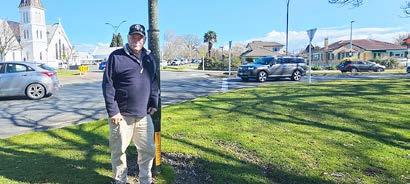
years milking cows and driving trucks and milk tankers.
News of the development surfaced following a Local Government Official Information and Meetings Act (Lgoima) request by The News for resource and building consents issued in the six months to June 30.
Previously, the information appeared in quarterly reports from District Growth and Regulatory Services group manager Wayne Allan. However, earlier this year, following a council workshop, it was decided to replace the reports in favour of media releases and newsletters from the Communications and Engagement team, leaving The News to make requests for the information and being told to wait under the act..
O’Connor said the townhouses will feature high-end finishes, private internal lifts, and double garages.
“These homes represent the best of Cambridge - elegant, considered design in a location that’s second to
none,” said O’Connor.
“This site has been an important journey, and we’re grateful to those who have supported us through the consent process.”
The bricks from the original house - the same type used to build the Huntly Courthousewill be salvaged and reused once demolition begins later this year.
Gone will be the spacious lawn and its iconic wishing well. For years the section has been a prime spot to advertise events and elections campaigns.
Pricing for the freehold units is expected to range between $1.7 million and $1.8 million, reflecting their proximity to town and Lake Te Koo Utu.
All units will be noise-proofed, given the roundabout - upgraded for $3.1 million eight years ago after it ceased being part of State Highway 1 -sees thousands of vehicles pass through daily.
Access to the development will be via Victoria Street, not Hamilton Road, O’Connor said.

St John stars recognised
By Viv Posselt
St John members from around the district were celebrated at Sunday’s Waipā and King Country Service Awards ceremony in Te Awamutu.
Recipients were commended by Waipā mayor Susan O’Regan for their years of service to St John.
She said the awards represent more than just time served, but also countless hours given freely, shared compassion and a steady commitment to community.
O’Regan made mention of the Te Awamutu Op Shop which is marking its 10th year in town, commending those involved for their loyalty and hard work.
She said the service it provided to the community, ‘in terms of the circular economy and helping prevent waste going into landfill’, was invaluable.
The annual awards acknowledge service given to the Order of St John, both paid and voluntary, and 2025 recipients came from Te Awamutu, Te Kuiti, Ōtorohanga, Cambridge, Putaruru and beyond.
Presenting them was Gary Salmon, who is chairperson of the Central Region Trust Board and chair of the Regional Honours Committee.
After a welcome by deputy chairperson of the Te Awamutu Area Committee and Waipā King Country Regional Board member, Richard Hurrell, guests were addressed by Ross McGowan, chairperson of the Te Awamutu Area Committee.
He also commended those involved in the running of the Te

Awamutu Op Shop, and said the outlet had contributed $2.8 million to St John and the local community over the 10 years it has operated.
“There have been around six staff volunteering their time each day, amounting to 64,700 hours over 10 years. It’s a great facility for St John and for our community.”
Thirty-eight members were recognised with a service certificate and badge for having completed five years’ service with St John. The Service Medal of the Order, awarded to those with 10 years’ service, was presented to 22 recipients. Seven members were recognised with their first bar to the Service Medal for completing 15 years’ service and eight were recognised with their second bar for 20 years’ service.
Two members, Sharon Abernethy of Te Awamutu and Nita Brown of Taumarunui were awarded a third bar for 25 years’ service. • See more pictures at cambridgenews.nz







Karen May from Cambridge received a five-year award. Photo: Viv Posselt
Developer Pat O’Connor at the busiest roundabout in Cambridge – with the most iconic church feature – is about to have a new look about it. Photo: Mary Anne Gill



Summerset Cambridge Open Weekend

Summerset Cambridge offers a relaxing and low-maintenance lifestyle in a vibrant and growing village. The grand village centre is well underway and once complete at the end of 2025, will offer a range of fantastic facilities for you to enjoy, from an indoor pool to a cafe and residents’ bar.
Located within the village centre, our serviced apartments are now selling off plans and offer the perfect balance between independent living and support on hand. The stunning new serviced apartment show homes are open to tour too.
We know that moving to a retirement village is a big decision. So why not come along to our Open Weekend on 23 & 24 August. See for yourself why our residents love the Summerset life.
Love the life you choose.
Open Weekend
Saturday 23 & Sunday 24 August, 10am - 2pm
Paewira cost doubled: claim
By Chris Gardner
The doubling of resource consent application costs led to the suspension of Global Contracting Solutions resource consent application to build a waste to energy plant in Te Awamutu, the applicant says.
Paewira waste-to-energy plant project director Adam Fletcher told The News application costs had risen one month before an independent board of inquiry began into the application in June.
“We are a bit bemused as to why they chose to do this now,” Fletcher said after Environment Protection Authority chief executive Allen Freeth emailed submitters with news of the suspension last week.
“We are only two weeks away from the decision. It seems a bit non sensical.”
The board of inquiry, chaired by Environment Court Judge Bryan Dwyer, sat for three weeks in Hamilton in June and July.
Neither Fletcher or the EPA would reveal the costs and Fletcher also declined to discuss a further $40,665
outstanding resource consent processing costs owed to Waipā District Council since April 2024.
The application for the plant initially went to the council, before being called in to an independent board of inquiry by minister for the environment Penny Simmonds.
Freeth, the email said, the suspension would pause all statutory processing timeframes, including the decision due date – August 28.
“If processing is resumed, we will provide an updated date.”
Waipā District Council and Te Awamutu and Kihikihi Community Board were among more than 2000 submitters on the plan, the vast majority in opposition.
The EPA’s decision to suspend the application came as a shock to board deputy chair Kane Titchener and Don’t Burn Waipā spokesman Nick Cantlon.
“It is entirely reasonable that the applicants are required to pay first before receiving the ruling,” Titchener said.
“The issue is that there is

a considerable amount of anxiety in the Te Awamutu and Kihikihi District because we were close to having certainty about the application. People’s lives, and in some cases businesses, have been put on hold. This delay is just another hold up.”
“We had been anticipating a decision from the board of inquiry within the next two weeks and to now be thrown into a state of limbo has been very disconcerting,” Cantlon said.
“This process has been underway for nearly four years, and the final decision was only two weeks away, having the process stopped like this is very unsettling to the local community who would like certainty by way of a decision.”

Masters riders defy age
The term Mamil - Middle-Aged Man in Lycra - was coined by marketing gurus 15 years ago.
Over the weekend, the Grassroots Cambridge Velodrome was full of them - and their female counterparts - at the Masters Track Cycling Carnival.
More than 60 riders aged 30 and over competed in over 100 events, having travelled from around New Zealand and even across the Tasman to take part. The competition was fierce and friendly, with athletes going head-to-head in the Sprint Cup, Endurance Cup, Omnium Cup, and thrilling Team Pursuit, Team Sprint, and Family Sprint showdowns.
Cycling proved itself a sport for all ages, none more so than in the Family Sprint, where Tim and Penny Pawson claimed
Liz Stolwyk
victory. Penny, who represented New Zealand in road cycling at the turn of the century, married Tim, a Commonwealth Games bronze medallist. Their shared passion led them to compete together at the World Masters Games in Auckland in 2018 - and they haven’t looked back. Penny has since become a world champion in her age group on the track.
The carnival featured a mix of highspeed sprints and tactical endurance races, showcasing the depth of talent and experience among the competitors. Among the standouts was Auckland’s Colin Claxton, racing in the 70–74 age group. A two-time world champion, Colin teamed up with his wife Denise under the whimsical team name Jurassic Park, proving that age is no barrier to speed - or fun.


Adam Fletcher
Olivia and Chris Auld of the Auld Alliance line up in the Family Team Sprint. Photo: Mary Anne Gill
men in business
DR. CHRIS PRUET
Innovative Glaucoma Specialist now in Cambridge Dr. Chris Pruet is a glaucoma specialist who uses the latest proven technology to safeguard your sight for a lifetime. If you have a family history of glaucoma, are curious about what eye surgery is suitable for you, or would simply like a comprehensive eye check, book a consultation now to protect your sight. He makes it a priority for his patients to be seen promptly.
Q: What makes your approach to glaucoma treatment different?
I specialise in advanced laser and surgical techniques that are safer and offer quicker recovery than traditional surgery. These procedures enhance the eye’s own drainage system to lower its pressure. The entire purpose of this is to protect your optic nerve from damage, ensuring your vision is outstanding and remains that way for the rest of your life. I value your time, which is why I am equipped to perform vision-preserving laser therapy in the same visit as your initial consultation.
Q: What new treatments are you offering?
I am committed to using the latest, safest medical advancements for my patients. As a prime example, I’m proud to be the first surgeon in New Zealand offering a procedure called High-Frequency Deep Sclerotomy that is widely used overseas. This state-ofthe-art Swiss technology is a gentle yet highly effective new way to lower eye pressure, and it’s just one of the many advanced, proven treatments I use to give my patients more options to safeguard their sight for a lifetime.

Q: What is your philosophy on patient care?
My priority is you. I listen carefully to your needs to create a plan that fits your life. My role is to be your expert advisor, but you are always in charge of your health decisions. Part of this commitment means being responsive; I can arrange surgery at short notice if required to ensure we act at the most crucial time to protect your vision. Invest in a Lifetime of Outstanding Vision
Your vision is precious. Take the first step towards protecting it for the future. Book a priority consultation with Dr. Pruet today to discover how modern treatments can help you maintain outstanding vision for life.
Call 07 242 0877
Clinics in Cambridge and Hamilton brighteyes@eyesurgeons.co.nz
Racing this time...
By Peter Carr
The names are in. The aspirants are known for the 2025 Waipā Council Steeplechase. Yes, that three-yearly event where experience and wannabees go head-to-head to attract your attention.
In Cambridge three sitting councillors seek a return to the big table, one as mayor. They will expect searching questions as to their recent governance - and rightly so. Perhaps, when you get the opportunity, seek the stance they took when the $50 million poorreturning ‘investment’ was put in place. Seek their stance at the time to the purchase of the ex-Bunnings store in Te Awamutu now sucking life out of the council’s coffers. Seek their views on the staff numbers increase over the last nine years.
With regard to the last item the (relatively new) council chief executive has put together a context report setting out the increases against annual spend of the council. It includes the transfer of accountability from central government to local bodiesrightly or wrongly, and the major growth of new dwellings to balance the demands of the attractiveness of Waipa. That said, to what extent did the current elected people measure, challenge and rail against some of the perceived excesses?
A writer to this paper last week highlighted a growth of ‘closed door meetings’. A long-standing councillor (again in last week’s paper) called for greater transparency and accountability for decisions. Whose decisions? Those of the currently elected governance group or those of the organisation’s staff? Another aspirant with regional council experience stated that the council has lacked sound planning and financial governance.


This is the loony warm-up period when aspirants use their words and elbows to get to the front row of the steeplechase field, hoping they will not be caught up in the hedges and hurdles and have enough energy for the final sprint down the straight.
You have the chance to challenge them - to seek their skill level and, more importantly, their governance experience. Clearly several are thin on the latter. But it is their right to stand. Currently there are two major Cambridge meetings ahead being the Grey Power (August 28) and the Cambridge Chamber of Commerce (suggested as members only) Town Hall gathering on September 4. The candidates have publicly announced their email and telephone numbers – take a look at the website of ElectionNZ and source the Waipa list. They all want to hear from you so why not make use of this opportunity?
Ask yourself about the suitability of aspirants, who do you want to curb the rapidly spiralling rates increases? Who do you want to ensure that the land for the third bridge is a practical and, very importantly, early decision? Who will serve you with sound, transparent and sensible board table challenges, measurement and accountability?
You only get one chance at this, and you only get that chance if you actually vote. If you ignore or abuse that right then you have only a thin chance of effecting balanced democracy.










DR. CHRIS PRUET
Council light on print adverts
By Mary Anne Gill
The 2028 local body elections could be run by the Electoral Commission if wide-sweeping changes recommended by a Local Government NZ electoral reform working group are adopted.
But for this year’s election, two private companies are running the show on behalf of councils: ElectionNZ.com, which is overseeing 54 elections including Waipā, Waitomo
and Ōtorohanga; and Election Services, which is managing 22, including Hamilton and Waikato.
In the last election, each vote cost Waipā ratepayers $9.23, paid to the Christchurch-based ElectionNZ.
That figure looks set to remain unless the council’s own advertising campaign delivers an unexpected surge in voter turnout.
Waipā has budgeted $284,000 for the 2025 local elections — not including
staff time, salaries, or overheads. Of that, $239,000 will go to ElectionNZ.
The remaining funds will cover advertising and marketing, materials and services, training, and catering.
Of the $30,598.60 allocated to advertising and marketing, most is going to a national media company as part of a digital advertising package that also included print ads in the nowclosed Cambridge Edition community newspaper.

The News has requested a breakdown of the advertising spend under the Local Government Official Information and Meetings Act (LGOIMA) — information the council has already provided to others and which has been shared publicly.
The council has yet to decide whether the portion of the advertising budget previously allocated to the Edition will be redirected to other print outlets or used for additional digital advertising.
Good Local Media editor Roy Pilott said Good Local Media was the only media which has consistently scrutinised the council over the last three years, and readers knew it.
He said it would seem rather strange if the council did not regard The News as an obvious choice for advertising.
“It’s thanks to our other advertisers – who support us week after week – that we are able to provide the coverage we do. It will be interesting to see how the council finally cuts its advertising cake.”
Side by side Susan O’Regan, Mike Pettit, and Clare St Pierre have sat around the Waipā District Council table together for the past six years - but that’s about to change.
All three are standing for mayor. O’Regan and Pettit are making all-ornothing bids, while St Pierre is also contesting the Pirongia-Kakepuku ward seat she’s held since 2013. Her chances of retaining it are strong. She’s up against Better Waipā’s Les Bennett, who lives in Karāpiro, and Ngāhinapōuri resident Naomi Pocock.
Bennett may have hurt his chances in the parochial ward by also standing for the Maungatautari Community Board - on the opposite side of the district.
Between now and election day, the three mayoral candidates will appear at various functions and debates, making their case to voters.
We wish them all good luck - and a clean fight. Photographer’s pick There was celebration in the Davies-Colley



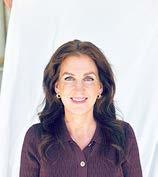
household last week when award-winning Cambridge photographer Christine Cornege selected Jo DaviesColley’s portrait as one of the best.
The image stood out for its crisp focus, flattering lighting, and clean background — all of which conveyed a sense of preparedness.
The photo was taken by Sylvie Davies-Colley, 12, who won the youth section of the Cambridge Autumn Festival’s photography competition two years ago. And that’s the hand of her 10-year-old brother Lansley holding up the white sheet behind her.




Catching up at Karāpiro: from left, Clare St Pierre, Mike Pettit and Susan O’Regan at the community celebration. Photo: Mary Anne Gill
The hand of Lansley Davies-Colley was cropped out of mum Jo’s final candidate photo. Photo: Sylvie Davies-Colley


1:50pm, Building alarm and evacuation, Firth St, Hamilton SUNDAY
11:19am, Building alarm and evacuation, Hannon Rd
12:25am, Building alarm and evacuation, Hannon Rd
WEDNESDAY
9:55am, Cardiac Arrest, Bryce Street
2:07am, Building alarm and evacuation, Cambridge Rd SATURDAY
1:09pm, Building Alarm and evacuation, Ruakura Road
4:48pm, Medical, cardiac arrest, Princes Street FRIDAY
11:56pm, Building Alarm and evacuation, Hautapu Road
5:29am, Van MVA, Waikato Expressway
So happy at Horahora
By Steph Bell-Jenkins
Horahora School’s principal Shannon Buckle has found her happy place.
“I feel like this is the place that I am meant to be,” she said.
8:42pm, Vegetation fire, Tirau Road
FRIDAY
WEDNESDAY
4:37pm, Alarm sounding, Burns Street
Buckle took the role at the beginning of this year, taking over from long-serving principal Joanne Synge, who retired in 2024.
TUESDAY
8:42am, Building Alarm and evacuation. Maungatautari Road SUNDAY
3:53am, Medical assistance, Karapiro Road
3:24am, Fog Cannon, Thornton Road
1:34pm, Alarm sounding, Bracken Street



PART OF YOUR COMMUNITY


HERE COMES SPRING

For

She said her biggest aspiration for Horahora School was to make sure it was a place where every student felt they could shine.
Buckle grew up in Hamilton and met her husband, Mathew, at Fraser High School. They have lived on a lifestyle block in Cambridge with their children Grace and Josiah for seven years.
Buckle has a Bachelor of Teaching degree from the University of Waikato and has taught at Te Kauwhata College, Frankton Primary School, Hamilton Christian School and Berkley Normal Middle School.
In April she concluded her work towards her Master of Educational Leadership with the submission of her thesis, which focused on how to implement digital technology programmes effectively in New Zealand classrooms. Last week she received her result – an A grade, with a recommendation to achieve first class honours.
As a parent and teacher, she is still a fan of learning with pens and paper.
“There is a place for more traditional methods of teaching and learning, always, regardless of the tools that you have around you,” she said.
“But for me, the reality is that when digital technologies are used well, students can soar with their understanding of curriculum content.
Kirsty Steeghs, who was

Shannon Buckle with students Ollie Saywell (left) and Mila Swanepoel. the school’s acting principal for two terms last year and is a member of its board, says “I think people assume there wouldn’t be much to do as a
country school principal but the reality is that you have the same requirements as a big school, but no one to share the load.
“Shannon is incredible and I am in awe of the way she has stepped into the role and pushed the school to a new level.”
Top dogs on show
Ōtorohanga will host the two day Huntly and District Kennel Association Championship Show for the first time next month.
Originally held in Huntly, then in Cambridge, the association’s next annual
champs will start on September 6. The event is run in association with the Waikato Gundog Club, the Hound Club of Auckland and the Waikato and Districts Collie Club, all of which will bring the pick of their litters to Ōtorohanga.




Open Home Sunday


New principal strikes it lucky
By Viv Posselt
Halfway through her first year as St Peter’s Catholic School principal, Nicole Higby is reflecting on how lucky she – and St Peter’s – really is.
Results in the 2025 school board elections come out next month. That exercise has validated Higby’s positive view of her school community, one she suggests many schools would be keen to emulate.
“We are incredibly lucky here with the number of people who have put their names forward for the board,” she told The News.
The St Peter’s community reminds Higby of the environment she enjoyed when

teaching at Te Pahu School between 2006 and 2011.
Before and after that, she taught at St Pius X School in Melville, St Joseph’s in Fairfield, and then at Marian Catholic School for over 13 years.
St Peter’s Catholic in Cambridge had been on her radar a few times before she finally made the move.
“It had been suggested to me on a several previous occasions that I should apply for this when it came up, but the time wasn’t right. I always loved teaching,” she said.
“But when it was put in front of me this time, I had already looked at it… and as it turns out, I can still top up my teaching. That way, I have got to know every child in the school.”
Higby was born in Ōtorohanga, one of seven children in a robust Catholic family. They moved to Ōhaupō where Higby grew up knowing she had to learn hard at school then get a job, ideally either nursing or teaching.
She wanted to teach, and as she started her own family, she won a scholarship and studied at Waikato, gaining a first-class master’s degree in education. In 2014, she completed a dissertation on engaging and motivating boys in writing through dialogue and collaboration.
Her experience places Higby well for what is a seminal year in terms of New Zealand education. Primary curriculum changes have introduced structured learning in key subjects such as English and maths, and the government has moved to replace openplan classroom teaching in favour of a more flexible format.
St Peter’s is well-placed for the latter, she said. Open classrooms built a few years ago can be easily partitioned for single-class or
group teaching, and she is positive about changes to the curriculum.
“I like the structure of it… the science of learning is probably my favourite thing about education. If I were to express a concern it would be about the speed of implementing the changes, particularly in smaller schools where you have crossover levels in terms of student groupings,” she said.
“It’s important to get the fundamentals right and I am optimistic there will still be space in there to encourage children to be creative in their learning. We see our students come to life through opportunities such as our garden and the recent production.
“Children have always got a good
FRIENDLY FORUM
With Hon Louise Upston, MP for Taupō
education here … this is about making sure no children are left behind. Once you have the pedagogy right, you can apply it anywhere.”
Letters to the Editor
• Letters should not exceed 200 words
• They should be opinion based on facts or current events
• All letters to be emailed to editor@goodlocal.nz
• No noms-de-plume
• Letters will be published with names
• Please include full name, address and contact details for our records only
• Letters may be edited, abridged, or rejected at the editor’s discretion
• The editor’s decision on publication is final.
Friday 5 September 2025, 10am - 11.30am
Cambridge Bowling Club, 37 Thornton Road, Cambridge
Please RSVP by calling 07 827 5572 or emailing upston.cambridge@parliament.govt.nz







St Peter’s Catholic School principal Nicole Higby pictured next to the korowai that was a gift from her previous school.
Photo: Viv Posselt
Karāpiro reunited
Both men now move onto Maraetai - where all its turbines, generators and governors will be replaced - followed by Ātiamuri and Ōhakuri, projects that will keep Mercury busy for years to come.
Mercury chief executive Stew Hamilton has been with the company four years, the last as CEO.
It was his 50th birthday the day of the community celebration and what a way to celebrate.
Although born in Auckland, Hamilton grew up in South Island communities where operations similar to the Karāpiro one had a big impact on people’s lives.
“I recognise that over the last few years there has been a life light between two sides of the community (here).”
His announcement that the road would reopen this week was received warmly by staff from Mighty River Domain on
Lake Karāpiro, and by locals like mother and daughter Hilma Gill and Debbie Alexander, who can now leave the village and visit the café on the other side of the lake.
“I’m in awe of the people who created this infrastructure that set New Zealand up for 70 plus years,” said Hamilton.
“We need to think seriously about how we’re setting New Zealand up for the next 50.”
The biggest change seems deceptively simple, he said.
“I was walking through the plant just now and if you were there three years ago, there was shaking and vibrating. There was nothing like that. It’s nice and smooth.”
Naming a favourite power station, he said, is like naming a favourite child.
“They’ve all got something but I think this is special for a lot of New Zealanders because they come to Karāpiro lake for all that happens on there.”
Alys Antiques & Fine Art




























Jules Duffart, French, 1924- French Town View, Oil on Board, Signed Chest of Drawers, Mahogany, Finely moulded Ogee Feet, 104cm high, 119 wide, 52 deep, End 18th, early 19th C, good condition.
87A Victoria St, Cambridge P: 07 827 6074 Mob: 021 65 19 49 W: www.alysantiques.co.nz


One of the community tours gathers on the bridge at Karāpiro Dam on the Waikato River. Inset: Stew Hamilton. Photo: Mary Anne Gill
SIMON GAULT FLAVOUR MADE SIMPLE

MONDAY 25 AUGUST, 10AM
Hosted at Sir Don Rowlands Centre, Karapiro Room, 601 Maungatautari Road, Cambridge

Join us for an exclusive cooking demonstration with award-winning chef, restaurateur, and TV personality Simon Gault. Known for his culinary expertise and passion for great food, Simon will not only share a delicious, easy recipe for one or two, but also take you on a journey through his life – the highs, the challenges, and the lessons learned along the way.
During this interactive session, Simon will demonstrate how to make a quick and nutritious meal at home, using clever techniques and fresh, accessible ingredients. As he cooks, he’ll share insights into his remarkable career, from working in Michelin-starred kitchens to fronting MasterChef NZ, and how food has shaped his life.
Find out more at rymanhealthcare.co.nz/events
RSVP is essential
Call David on 0800 600 446
PATRICK HOGAN VILLAGE
23 Hugo Shaw Drive, Cambridge
What peace means to me
By Murray Smith, Bridges Church
The title above is the theme of an international painting competition organised by ‘Mayors for Peace’, a worldwide group of local body leaders representing cities and regions around the world. It’s open to young artists aged from six years to 15 years old, within specific age groups and guidelines. Over 30 New Zealand district council and city mayors are a part of this international fraternity.
As a theme, ‘peace’ could be expressed in various ways. This painting competition encourages young artists to creatively express their vision of peace with the hope that they will provide messages that ‘promote peace’ through art… an admirable though elusive goal in a woefully conflicted world, where hostilities exude anything but peace.
Notably, the conflict between Gaza and Israel has drawn the eyes of the world to this strategic region - a tiny stretch of land, collectively about the same size in area, as from Warkworth to Cape Reinga. It’s significant spiritually, that this embattled piece of earth has continually captured worldwide media attention, creating complexities for successive governments of nations throughout the world, since 1948 when the State of Israel was officially established. But well before that, a parade of Israel’s history of conflicts, wars, persecution, conquest and exiles followed by repatriation, stretches back throughout centuries - well before the coming of Christ. The current battle with Hamas and its cohorts constitutes the latest entries in a long ledger written in blood and tears.
What will it take for the human family to be at peace with one another? Applying this more specifically, what will it take to bring peace between conflicted nations, racial divides or ‘domestic’ peace within individual nations (New Zealand included), where fractious and
hate-filled divisions exist - or closer to home, how can peace be found for broken families enduring splits and ruptured relationships?
It’s important to note the proclamation that accompanied the announcement of Jesus’ birth. Following a millennia of prophetic declarations promising a Messiah who would inaugurate a heavenly reign, bursts forth an angelic proclamation of “good news and great joy for all people…” That message went further, claiming that Christ’s coming ushered in the prospect of, “Peace on earth, goodwill among people.” (Luke 2:9-14).

So what’s gone wrong? Where’s the ‘heavenly reign’ and peace that Jesus’ coming announced?
The answer lies in this fact - first and foremost He came primarily to reconcile humanity to relationship with God. That’s the essential start point since hope of peaceful harmony and benevolence among mankind, begins with individual reconciliation to God, resulting in inner transformation and healed hearts. He called that being ‘born again.’ One of Jesus’ titles is ‘Prince of Peace’ and truly sustainable peace between people, can only be brokered through His mediation.
Jesus foretold signs that would indicate the ‘end of the age’ as we know it - an exponential increase in wars, famine, pestilences and natural disasters. Yet He promised His followers peace that transcends the world’s darkness. His promises hold good… “Peace on earth, goodwill among people”. More than a chirpy message on Christmas cards, it’s an irrevocable promise that a day is coming when Christ Himself, the Messiah will establish His rule and order upon the earth.
ON SHAKY GROUND
Gravity at work
By Janine Krippner
I am undertaking the brutal adjustment of coming from the oppressive, dusty heatwaves in Spain to mid-winter New Zealand - going from long, sunny days on the islands to frosty mornings.
Several weeks ago now, once the students had returned home and our projects were wrapped up, my focus shifted from volcanic resilience on Tenerife to the westernmost island of the Canaries, El Hierro. I travelled there by ferry with colleague Sergio Alfaya to investigate rockfalls following our month of work with GeoTenerife. I had written about his research a few weeks earlier, and now it was time to see the geology for ourselves.
El Hierro took my breath away. Much of its northwest coast is dominated by an immense cliff that rises around a kilometre above sea level in an astonishingly short distance, exposing countless stacked lava flows. Above, the surface is dotted with scoria cones and younger lava flows, with more than 500 craters mapped across the island. The landscape is so spectacular that the entire island has been designated a Unesco Global Geopark.
It is also volcanically active. In 2011, a seismic crisis shook the island, culminating in a submarine eruption. The uncertainty over where the vent might open caused major disruption for residents, providing lessons that later proved invaluable during the 2021 Tajogaite eruption on neighbouring La Palma.
Steep volcanic slopes and sheer cliffs make El Hierro especially prone to rockfalls. These range from minor tumbles to significant road-blocking events. Local authorities are so familiar with the hazard
Driving Cour se
For young drivers 16-24 years


that debris is cleared with remarkable speed. Driving around, we saw patches of concrete where heavy rocks had punched holes in the road surface.
At one point we entered a stretch of road that was marked by a large yellow sign stating “Danger, landslides. Go on at your own risk”. Above the road were tall fences set to catch falling rocks, and at the most dangerous spot, a tunnel has been built for rocks to cross.
Evidence of gravity’s relentless pull was everywhere: broken blocks of ancient lava littered the slopes, and one fence, several metres high, bore a deep dent from a boulder that had bounced its way downhill before smashing into the barrier. We didn’t linger in that section.
The scale of rockfalls and landslides is immense, from handfuls of fist-sized rocks scattered across a neighbourhood road to giant scarps carved by catastrophic events that sent debris far out to sea. In fact, around half the seafloor surrounding the island, extending out to 60 km offshore, is covered in landslide deposits. Over the past 200,000 years, four giant landslides have stripped away roughly 10 per cent of El Hierro’s land mass. Thankfully, these massive collapses are rare compared with the smaller, but still dangerous, events that occur regularly.
We all live with our own geologic hazards but seeing them so starkly on an island of just 11,000 people was a powerful reminder of how closely some communities live with the forces shaping our planet.
Date:


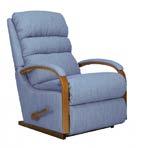












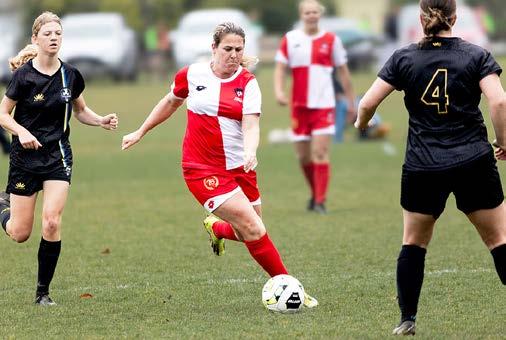

Sunday feast
Cambridge Football Club served up a feast of football on Sunday as six matches stacked the schedule. The action kicked off at John Kerkhof Park at 10am, as the club’s U14 Talent Development Programme team took on East Coast Bays, from Auckland’s North Shore.

cambridge grains
Your trusted local supplier of premium feed for horses, livestock, poultry, and pets. From tailored equine nutrition to everyday farm and pet essentials, we’ve got everything you need. Quality products, expert advice, and friendly service.

The same quality service and products just a new and improved location!


From
Under-15 and Under-17 development teams also met sides from that club, while Cambridge Under 13 Black hosted Melville. There were two women’s team in action too – Cambridge’s Women’s reserves played Hamilton Wanderers and the club’s division 2 Rubies side took on Thames. Steph Bell-Jenkins took her camera along to capture some of the action.









Dawson Smith from Cambridge’s U14 in action against East Coast Bays. The visitors won 4-1.
Rachel Hill, in action for the Rubies.
Amelia Paull, playing for Cambridge Women’s Division 2 Rubies in a 6-2 loss to Thames.

Mum could not be happier with her hearing aids and the exceptional
service
from Resonate. You are an extension of our family.
Mum could not be happier with her hearing aids and the exceptional service from Resonate. You are an extension of our family.
Mum could not be happier with her hearing aids and the exceptional service from Resonate. You are an extension of our family.
RESONATE CUSTOMER PHONE CONVERSATION WITH JAMES
RESONATE CUSTOMER PHONE CONVERSATION WITH JAMES
RESONATE CUSTOMER PHONE CONVERSATION WITH JAMES
7 AUGUST 2025
7 AUGUST 2025
7 AUGUST 2025
I founded Resonate to bring affordable hearing care to all New Zealanders.
I founded Resonate to bring affordable hearing care to all New Zealanders.
I founded Resonate to bring affordable hearing care to all New Zealanders.
I understand how hard it can be to find the right hearing aids at the right price.
I understand how hard it can be to find the right hearing aids at the right price.
I understand how hard it can be to find the right hearing aids at the right price.
That’s why we offer you the very best hearing aids for just $90 per month on subscription.
That’s why we offer you the very best hearing aids for just $90 per month on subscription.
That’s why we offer you the very best hearing aids for just $90 per month on subscription.
Why subscription? Because technology changes fast, and why pay $000s upfront when you have no guarantee of the level of service you will get.
Why subscription? Because technology changes fast, and why pay $000s upfront when you have no guarantee of the level of service you will get.
Why subscription? Because technology changes fast, and why pay $000s upfront when you have no guarantee of the level of service you will get.
l’ve included my mobile phone number on our website. Only a business that backs its promises would dare to do that.
l’ve included my mobile phone number on our website. Only a business that backs its promises would dare to do that.
l’ve included my mobile phone number on our website. Only a business that backs its promises would dare to do that.
To find out more about Resonate’s unique hearing aid service, visit resonatehealth.co.nz or call 0800 327 360
To find out more about Resonate’s unique hearing aid service, visit resonatehealth.co.nz or call 0800 327 360
To find out more about Resonate’s unique hearing aid service, visit resonatehealth.co.nz or call 0800 327 360
Or, of course, you can call me.
We really are an extension of your family.
Or, of course, you can call me. We really are an extension of your family.
Or, of course, you can call me. We really are an extension of your family.
Thanks for reading,
Thanks for reading,
Thanks for reading,

James Whittaker


FOUNDER & CEO
FOUNDER & CEO
RESONATE HEALTH
RESONATE HEALTH
RESONATE HEALTH



YEARS 1-6

Cambridge East School 128 Williams Street, Cambridge 3434 (07) 827 7651 www.cambridgeeast.school.nz
Cambridge Primary School
3 Wilson Street, Cambridge 3434 (07) 827 5316 www.cambridgeprimary.co.nz
Goodwood School
517 Fencourt Road, RD1, Fencourt 3493 (07) 827 6817 www.goodwood.school.nz
Hautapu School
5 Hana Lane, Cambridge 3493 (07) 827 7466 www.hautapu.school.nz
Horahora School
1798 Maungatautari Road, RD2, Maungatautari 3494 (07) 827 2823 www.horahoracambridge. school.nz
Kaipaki School
687 Kaipaki Road, RD 3, Cambridge 3495 (07) 823 6653 www.kaipaki.school.nz
Karapiro School 705 Tirau Road, Karapiro 3496 (07) 827 7642 www.karapiro.school.nz
Leamington Primary School
249 Lamb Street, Leamington, Cambridge 3432 (07) 827 5747 www.leamington.school.nz
Roto-o-Rangi School 5 Kairangi Rd, Cambridge 3495 (07) 827 1727 www.rotoorangi.school.nz
St Peter’s Catholic School 22 Anzac Street, Cambridge 3434 (07) 827 6623 www.stpeterscatholic.school.nz
Tauwhare School 26 Scotsman Valley Road, RD7, Hamilton 3287 (07) 824 0864 www.tauwhare.school.nz
Te Miro School
443 Te Miro Road, Te Miro 3496 (07) 827 8146 www.temiro.school.nz


YEARS 7-8
Cambridge Middle School Clare Street, Cambridge 3434 (07) 827 5135 www.cms.school.nz
Hautapu School 5 Hana Lane, Cambridge 3493 (07) 827 7466 www.hautapu.school.nz
HoraHora School
1798 Maungatautari Road, RD2, Maungatautari 3494 (07) 827 2823 www.horahoracambridge.school.nz
Kaipaki School
687 Kaipaki Road, RD 3, Cambridge 3495 (07) 823 6653 www.kaipaki.school.nz
St Peter’s Catholic School 22 Anzac Street, Cambridge 3434 (07) 827 6623 www.stpeterscatholic.school.nz
St Peter’s School 1716 Cambridge Road, Cambridge 3283 (07) 827 9899 www.stpeters.school.nz
Te Miro School
443 Te Miro Road, Te Miro 3496 (07) 827 8146 www.temiro.school.nz


The Cambridge East School Board of Trustees have made Out-of-Zone places available for Years 1-5 for the 2026 school year. or email: for website
If the number of applicants exceeds the places available, a ballot will be conducted.
16 September 2025.



School Directory List Understanding Out-of-Zone enrolment policies
The process of enrolling children in schools outside their designated home zones is often of considerable importance for families seeking the best educational opportunities for their children.
The Ministry of Education (MOE) has a set of criteria to manage out-of-zone applications to ensure fairness, prevent overcrowding, and maintain equitable access to quality education.
School zones are geographic areas assigned to specific schools to manage student populations. Children who live within this zone are generally entitled to automatic enrolment at the corresponding school. Zoning helps prevent the overpopulation of popular schools and ensures that all children have access to education close to home.
When a school's roll is not full after enrolling all in-zone students, the MOE permits the school to accept additional students from outside the designated zone. The MOE requires these places be allocated using a fair and transparent ballot (lottery) process. This system is used to prevent any potential bias and ensures all applicants are given an equal opportunity, based on the school’s capacity.
The MOE has a clear hierarchy of priority groups to determine which outof-zone applicants are considered first during the ballot. The typical priority order is as follows:
• Priority 1: Applicants who are siblings of current students.
• Priority 2: Applicants who are siblings of former students.
• Priority 3: Applicants who are children of former students.
• Priority 4: Applicants who are children of school staff or board members.
• Priority 5: All other applicants.
If the number of applicants in a priority group exceeds the available spaces, a ballot is conducted among that group alone.
Schools must clearly communicate their out-of-zone enrolment process, including application deadlines, ballot dates, and notification procedures. The MOE requires schools to publish this information on their websites and in community notices to ensure families are fully informed.
The process ensures that family connections to a school are recognised while still providing opportunities for new families.

OUT OF ZONE ENROLMENTS
OUT OF ZONE ENROLMENTS
The Goodwood School Board of Trustees invites applications from out of zone parents who wish to enrol their children at Goodwood School for 2026.
Enrolment at the school is governed by an enrolment scheme, details of which are available from the school office or website. Applications are to be made by completing a ballot form (available from the school office or the Goodwood School website). The deadline for receipt of applications for out of zone places is 4pm Monday 6th October 2025.
The Board has determined that up to 15 places are likely to be available for out of zone students. The exact number of places will depend on the numbers of applications received from students who live within the school’s home zone.
If the number of out of zone applications exceeds the number of places available, students will be selected by ballot as per priority guidelines. If a ballot is required it will be held on Wednesday 8th October 2025.
Parents will be informed of the outcome of the ballot within three school days of the ballot being held.
Please contact the principal David Graham or school office for further information and an information pack.
You are most welcome to visit our school at 517 Fencourt Road, RD 1, Cambridge.






Reasons for choosing an out of zone school
One of the most significant decisions parents face is the decision on which school to send their child. While traditionally many children attend their local, in-zone school, a significant number of families are actively seeking out enrolment in out-of-zone schools.
The reasons behind these decisions are shaped by a blend of educational, social, logistical, along with personal factors and expectations.
One of the primary reasons parents seek out-of-zone schools is the perception of higher academic standards. Some schools have a reputation for outstanding academic achievement, robust examination results, or strong performance in national assessments. Parents may believe their child will receive a higher quality education or have better tertiary prospects at such schools.
Certain schools may offer specialist curricular or extracurricular programmes not available at in-zone schools. These may include advanced science or mathematics streams, arts academies, bilingual or total immersion Māori language education (kura kaupapa Māori), or technologyfocused courses.
Parents who wish their child to benefit from these unique offerings are often willing to travel outside their zone. It’s not just the academic expectation. With bullying on the rise around the country, the reputation of a school’s leadership and/or teaching team can also heavily influence parental choice.
Experienced principals, renowned educators, and stable staff can create a sense of confidence in the quality of education and the school culture – and the safety of their students.
Families often seek schools where the philosophies and values align with their own. This might include religious character, emphasis on cultural diversity, or a focus on holistic education and well-being. For example, some
parents may prefer schoools that t prioritise environmental
parents may prefer schools that prioritise environmental sustainability, have a strong anti-bullying stance, or champion inclusivity and te Tiriti o Waitangi principles.
Parents may wish their children to be part of a particular social environment or peer group. This could be motivated by the desire for their child to mix with others who are academically focused, culturally similar, or share common interests. Sometimes, family friends or extended whanau may already attend an out-of-zone school, making it an attractive option for social reasons.
Some schools are renowned for their sports teams, music programmes, or performing arts opportunities. Parents with children who are passionate about a particular discipline - be it rugby, kapa haka, debating, or orchestral musicmay seek schools where these activities are especially well supported.
Then there is the choices based on practicality.
In dual-income families or where parents work far from home, it may be more convenient for a child to attend a school near a parent’s workplace. This can make daily dropoff and pick-up more manageable, allow for better parental involvement, and provide greater peace of mind.
As an adjunct to that, some schools offer after-school care or have arrangements with local providers that better fit a family’s schedule. Parents may choose an out-of-zone school because it offers better support for working families.
If a child’s sibling is already attending an out-of-zone school, parents may seek enrolment for younger children for consistency and family convenience.
Families planning to move in the near future may preemptively enrol children in an out-of-zone school, particularly if the school is closer to their intended new home or offers stability through transitions.
An increasing reason for change mid-term or at the




Where are are my kid’s my kid’sfriends going?
Should I choose I a school close a to home or or close to work? close to
beginning of a new year, can be if a child or their family has experienced issues such as bullying, discrimination, or lack of support at their local school.
This means they may seek a fresh start elsewhere. Wordof-mouth and testimonials from other families about positive experiences at out-of-zone schools can be powerful motivators.
School rankings or published in the media can also strongly influence parental perceptions - sometimes regardless of whether they reflect the full picture of a school’s quality. The desire for a “top ranked” school can lead to out-of-zone applications, especially in urban centres.
HORAHORA SCHOOL
Discover Horahora School: A Place for Your Child to Thrive
Are you looking for a school where your child is seen, heard, and encouraged to reach their full potential?
Horahora School is a positive learning environment where students from Year 0 to 8 are encouraged to develop responsibility and leadership, especially in the senior years.
With a low student-to-teacher ratio, we offer individual attention for every child. Our staff are highly skilled in structured literacy and maths, leading to consistently high student achievement.


The Board of Trustees invites from out of zone who wish to enrol their children at School for 2026.
Enrolment at the school is which are available from the school office or our website. Applications can be made an enrolment form from the school office, admin@hautapu.school.nz, or completing an
The Hautapu Board of Trustees invites applications from out of zone parents who wish to enrol their children at Hautapu School for 2026. Enrolment at the school is governed by an enrolment scheme, details of which are available from the school office or our website. Applications can be made by collecting an enrolment form from the school office, emailing admin@hautapu.school.nz, or by completing an online enrolment form via the school website.
We provide a rich curriculum including local history, science, and Te Reo M ā ori, with a strong focus on Education Outside the Classroom (EOTC) and hands-on experiences. Our junior class benefits from play-based learning, while middle and senior students have their own Chromebooks for integrated digital technologies.
Our excellent facilities include a heated indoor saltwater pool, a flying fox, a bike track, and a unique outdoor classroom.
We are currently taking enrolments for the 2026 school year.

The deadline for receipt of applications for out of zone places is . The board has determined that 25 places are likely to be available for out of zone students next year. The exact number of places will depend on the number of applications received from students who live within the school’s home zone. If the number of out of zone applications exceeds the number of places available, students will be selected by ballot as per priority guidelines.
The deadline for of for out of zone is to be available for out of zone students next The exact number of zone. out ballot as per priority
Come and see the difference a small, supportive school can make for your child's future. For more information or to arrange a visit, please contact us today.
1798 Maungatautari Road, Maungatautari 3494, NZ (07) 827 2823 office@horahoracambridge.school.nz horahoracambridge.school.nz

If a ballot is it will be held on of the outcome of the ballot within three of the ballot held.
If a ballot is required, it will be held on . Parents will be informed of the outcome of the ballot within three working days of the ballot being held.
For further information or to be shown around the school, please contact admin@hautapu.school.nz or phone 07 827 7466. You are most welcome to visit our school at 5 Hana Lane, RD1, Cambridge.
For further information or to be shown around the school, please contact or 07 827 7466. You are most welcome to visit our school at 5 Hana Lane, RD1, Cambridge



How to apply for a school ballot
Ballot application in an out-of-zone school is a process designed to provide students with fair access to schools outside their designated residential area, where space allows. This process is where schools use enrolment zones to manage student numbers and maintain quality education. So, how do you navigate the application process?
Understand eligibility
First, check if your chosen school operates an enrolment scheme with a ballot system for out-of-zone placements. Most schools publish their enrolment information, including zone maps and ballot details, on their websites. If your home address falls outside the school’s zone, your child is eligible to apply for an out-of-zone place, subject to availability.
Gather necessary Information
Collect key documents such as proof of address, your child’s birth certificate or passport, and any other information required by the school. Some schools might request additional documentation, such as previous school reports or immunisation records.
Complete the application form
Find and fill out the school’s out-of-zone enrolment application form. Forms are typically available on the school's website or at the school office. Pay close attention to the advertised application deadlines - late applications are rarely accepted. Often, it’s advisable that you start the process as early as possible.
Submit your application
Submit your completed application along with all required documents by the deadline. This may be done in person, via mail, or through an online portal, depending on the school’s process. Check with the school if you are unsure.
Ballot process and notification
If the number of out-of-zone applications exceeds available places, the school will conduct a ballot, which is a random selection process supervised by an independent party. Successful applicants are notified - usually by email or letter - and must confirm acceptance within a specified timeframe.
Final steps
If your application is unsuccessful, you may be placed on a waiting list or consider other schooling options. For the best chance of success, ensure all steps are completed accurately and within the given timelines.

Kaipaki School
OUT OF ZONE ENROLMENTS FOR 2025/2026
OUT OF ZONE ENROLMENTS FOR 2023/2024
Due to ongoing roll growth at Kaipaki School, enrolment continues to be governed by an enrolment scheme.
Due to ongoing roll growth at Kaipaki School, enrolment continues to be governed by an enrolment scheme.
In 2023/2024 there will be 3 enrolment periods, with the first enrolment period from 9th October 2023 to 12th April 2024
In 2025/2026 there will be 4 enrolment periods, with the first enrolment period from 6th October 2025 to 16th December 2025
The board has determined that:
The board has determined that:
• Up to 10 places in Year 0/1
• Up to 6 places in Year 2-4
• Up to 6 places in Year 0-3 are likely to be available for out-of-zone students in the second enrolment period. The exact number of places will depend on the number of applications received from students who live within the school’s home zone.
For students seeking enrolment within the first enrolment period, the deadline for receipt of applications for out-of-zone places is Friday 12th September 2025. If the number of outof-zone applications exceeds the number of places available, students will be selected by ballot. If a ballot is required, it will be held on Tuesday 16th September 2025. Parents will be informed of the outcome of the ballot within three school days of the ballot being held.
Details of the second enrolment period are:
Monday 2nd February 2026 to Thursday 2nd April 2026
Deadline for receipt of applications: Friday 7th November 2025
Date of ballot: Tuesday 11th November 2025
• Up to 4 places in Year 5-7 for Term 1, 2024 are likely to be available for out-of-zone students in the first enrolment period. The exact number of places will depend on the number of applications received from students who live within the school’s home zone. For students seeking enrolment within the first enrolment period, the deadline for receipt of applications for out-of-zone places is Monday 18th September 2023. If the number of out-of-zone applications exceeds the number of places available, students will be selected by ballot. If a ballot is required, it will be held on Wednesday 20th September 2023. Parents will be informed of the outcome of the ballot within three school days of the ballot being held.
Details of the third enrolment period are:
Details of the second enrolment period are:
Monday 20th April 2026 to Friday 3rd July 2026
Monday 29th April 2024 to Friday 5th July 2024
Deadline for receipt of applications: Friday 6th March 2026
Deadline for receipt of applications: Thursday 28th March 2024
Date of ballot: Tuesday 10th March 2026
Date of ballot: Wednesday 3rd April 2024
Details of the fourth enrolment period are:
Details of the third enrolment period are:
Monday 20th July 2026 to Friday 25th September 2026
Monday 22nd July 2024 to Friday 27th September 2024
Deadline for receipt of applications: Friday 22nd May 2026
Deadline for receipt of applications: Monday 24th June 2024
Date of ballot: Tuesday 26th May 2026
Date of ballot: Wednesday 26th June 2024





When needs are special
to access education, including those with special needs. One of the critical issues faced by many families is the process of enrolling a special needs child in a school that falls outside their designated home zone - commonly known as “out of zone” enrolment. This process can be both essential and complex, as parents look to find a school that can best meet the individual educational and developmental requirements of their child.
Our state and state-integrated schools often operate under an enrolment scheme known as “zoning.” Each school with a zone gives automatic entry to students who live within that geographical area. The system is intended to manage school roll numbers, prevent overcrowding, and ensure local children have access to nearby schools.
However, not all schools are able to provide the same level or type of support for children with special needs.
Parents of children with special needs may seek out-of-zone enrolment for several reasons:
• Their local school may not have the facilities, specialist staff, or programmes suitable for their child’s needs.
• Some schools have specialist units, ORS (Ongoing Resourcing Scheme) funded classrooms, or inclusive support environments tailored for particular disabilities or learning differences.
with a strong record of inclusive education or specific expertise in supporting children with conditions such as autism, ADHD, Down syndrome, or sensory impairments. Applying for an out-of-zone place involves a formal process. Schools with zoning must publish the number of available out of zone places and the deadline for applications. If there are more applicants than places, a ballot is held. Special consideration may be given to siblings of current students and, in some cases, to children who have particular educational needs that cannot be met locally.
For children with special needs, supporting documentation from specialists, therapists, or educational psychologists can strengthen the application. The Ministry of Education (MOE) can also provide guidance for families, and in specific cases, Ministry staff may advocate on a child’s behalf to ensure appropriate placement.
Despite the procedures in place, out-of zone enrolment can present challenges — especially for families who may not have the means to navigate complex application requirements or who must travel considerable distances if their child is accepted at a non-local school.
There is also competition for limited spaces in specialised programmes, which can create additional anxiety for parents.





Senior students enjoying Wool Day with principal Alana Thompson (left) and senior teacher Johanna Buckley.







Crackdown on zone addresses A culturally significant choice
In recent years, the Ministry of Education (MOE) has intensified its efforts to enforce school zoning laws, focusing on the issue of students attending in-zone schools without genuinely residing within the specified catchment areas. This crackdown aims to preserve the integrity of the educational system and ensure fair access for all eligible students.
The Ministry’s recent crackdown involves a stricter verification process for enrolment. Schools are now required to request multiple forms of address verification, such as utility bills, tenancy agreements, or government letters, to confirm a student’s residency. Random audits and spot checks have been introduced, and in some cases, the Ministry has deployed investigators to follow up on suspicious applications.
This increased scrutiny is a response to concerns that some families have been shown to be providing false or temporary addresses to secure a place in sought-after schools.
Such actions can disadvantage genuine in-zone students and create inequities in the education system.
The MOE has made it clear that
providing false information during the enrolment process is a serious offence and can result in enrolment being revoked, even after a student has started at the school.
While many communities support the crackdown, believing it levels the playing field, others have raised concerns about its impact on families in transition, such as those between homes or with complex living arrangements. Some worry that increased bureaucracy may unfairly penalise honest families or create unnecessary stress for those living in informal or shared housing.
Schools have responded by updating enrolment procedures and training staff to handle sensitive cases more empathetically. The MOE has emphasised that its intention is not to exclude vulnerable students, but to ensure all families understand the rules and abide by them.
So it pays to look at all the relevant issues before choosing to enrol in an out of zone school. You are best to talk with the staff at your chosen school to make sure the criteria you are using falls within the MOE’s rules and policies.
An increasing number of families seek to enrol their children in schools that reflect particular religious beliefs or cultural values. Such schools, often known as “special character” schools, from Christian, Muslim, and Jewish schools, to kura kaupapa Maori and other cultural institutions. These schools may have geographical “zones,” giving priority to students living within a certain area, but also offer limited places to “out-of-zone” students who live elsewhere.
While New Zealand’s school zoning system is designed to ensure local children have access to their nearest schools, special character schools provide education based on a particular religion, philosophy, or cultural tradition, and their enrolment schemes can differ from mainstream state schools.
Special character schools can be either stateintegrated (state-funded but with a religious or philosophical “integration agreement”) or private. State-integrated schools are part of the state system but retain their unique ethos. Examples include Catholic, Christian, Seventh-Day Adventist, Islamic, and Steiner schools, as well as Māori immersion kura.
If you live outside a school’s designated zone, you may still apply for your child to attend. Out-ofzone applications are generally managed through a ballot system, especially when demand exceeds available places. The steps are as follows:
Check the school’s special character: research the ethos, curriculum, and expectations of the school. Some require families to demonstrate a commitment to the school’s faith or cultural values.
Confirm application dates: Out-of-zone application closing dates are often set months in
advance. Check the school’s website or contact their office for precise timelines.
Complete the enrolment form: fill out the relevant forms, indicating you are applying as an out-of-zone student. Some schools may require additional documentation, such as proof of address, letters of support from religious or community leaders, or statements of faith.
Attend Interviews or meetings: many religious or cultural schools interview prospective families to discuss their connection (or willingness to connect) with the school’s special character.
Enter the ballot (if applicable): If more outof-zone applications are received than places available, a ballot (lottery) is held. Priority is usually given to siblings of current students, children of staff, or those with particular links to the school’s faith or tradition.
Wait for notification: The school will notify families of the results of the application or ballot, and offer places if successful.
Start early: application windows can be brief, and supporting documentation may take time to prepare.
Be prepared to explain your family’s connection to, or support for, the school’s special character. While some schools are open to all, others require a demonstrated commitment.
If unsuccessful in a ballot, you may be placed on a waiting list for future vacancies.
Remember that attending a special character school may involve participation in religious or cultural events, and possibly payment of attendance dues or donations (in state-integrated schools).
School
Leamington
Creating futures together
Kia aro ngaatahi ki anamata
Out Of Zone Enrolments 2026
Out Of Zone Enrolments 2025



Enrolment at Leamington School is governed by an enrolment scheme due to continual enrolment demand from across Cambridge. Due to increased classroom capacity the Board have determined that in 2025 there will likely be places for:
Enrolment at Leamington School is governed by an enrolment scheme due to continual enrolment demand from across Cambridge. Due to increased classroom capacity the Board have determined that in 2026 there will likely be places for:
• Year 1 – up to five chidren
• Year 2 – up to three children
• Year 1 – up to seven children
• Year 3 and 4 – up to four children
• Year 2 – up to three children
• Year 5 and 6 – up to six children
• Year 3 and 4 – up to five children
• Year 5 and 6 – up to ten children
Families of in-zone children are encouraged to enrol online now to ensure they receive maximum educational benefit from our exclusive “Kick Start” Transition to School program.
Families of in-zone children are encouraged to enrol online now to ensure they receive maximum educational benefit from our exclusive Kick Start Transition to School programme.
Details of our zone can be found either on the school website or from the school office.
Details of our zone can be found either on the school website or from the school office.
Our vibrant country school is taking new enrolments now.
An enrolment scheme governs our highly successful school, however, we are accepting multiple enrolments for Out of Zone students across each year level.
An enrolment scheme governs our highly successful school, however, we are accepting multiple enrolments for Out of Zone students across all year levels.
Applications for places close on October 6th. If the number of applications exceeds the available spaces, we will hold a ballot on October 9th.
Applications for places close on October 1 th. If the number of applications exceeds the available spaces, we will hold a ballot on October 16th.
What can we offer you:
What can weoffe
For an application pack or to learn more about how to apply for an out of zone place please contact our school office on 07 827 5747 or email office@leamington.school.nz
To learn more about how to apply for an out of zone place, please contact our school office on 07 827 5747 or email office@leamington.school.nz
Applications close Friday 17 October 2025
Applications close Friday 18 October 2024.




Smaller school numbers, personalised learning for your child
Smaller school numbers, personalised learning for your child

Bus from Town and the surrounding area
Strong academic achievement rates
Strong achievement rates due to high quality learning programmes
Rural and enviro learning: Garden to Table, Ag Day, Maungatautari etc.
Whānau and community are our foundation After School and Before School Care
Our learning is created through a partnership with family/whaanau & community
Inclusive learning environment.
Only 5 minutes from the hustle and bustle of town Leadership, sporting and cultural opportunities Inclusive learning environment.
The 3Rs are our cornerstone: Respect, Resilience, Responsibility Leadership, sporting and cultural opportunities Bus from Town and the surrounding area
Rural learning: Ag Day, Maungatautari visits, Garden to Table, chickens, beehive, etc.
After School and Before School Care available

If you would like to visit our school or be sent more information please contact us:
Phone: 827 1727
Email: off ice@rotoorangi.school.nz
Website: www.rotoorangi.school.nz






























Transporting student to Transporting student to out-of-zone schools
Choosing to enrol a child in an out-of-zone school is a significant decision for many Kiwi families, often motivated by specialised programmes, cultural fit, or a school's reputation.
However, one of the main challenges that arises from this choice is transportation, particularly if the family relies on public or school bus services.
The Ministry of Education (MOE) provides free school bus transport for eligible students travelling to their closest state or state-integrated school where no suitable public transport exists. However, children attending a school outside their designated zone usually do not qualify for governmentfunded school buses. This leaves families to consider alternative transport arrangements.
While Ministry-funded bus services typically serve in-zone students, there are still pathways for out-of-zone children to commute by bus.
In urban and semi-urban areas, public buses cover extensive routes. Parents can plan journeys using regional bus services, though they should account for potential transfers and travel time. Discounted fares are often available for school-aged children, and some regions offer dedicated school bus routes open to all, space permitting.
Some schools or clusters of schools contract private buses for students, including those from out-of-zone areas. These services are often funded by user fees and may have limited capacity, so early registration is recommended.
In cases where public or private
services are not feasible, parents may organise carpooling or shared transport arrangements to a bus pick-up point or directly to school.
There are practical considerations and tips
• Journey planning: use online journey planners and contact local councils for information on available routes and timetables. Factor in the extra time for connections or possible delays.
• Costs: out-of-zone families typically bear the transport costs. Some schools have hardship funds or can advise on subsidies for families facing financial challenges.
• Supervision: for younger children, consider arrangements for supervision at bus stops or during transfers.
• School policies: Check with the chosen school about any existing transport solutions for out-of-zone students. Some have parent networks or can connect families with similar transport needs.
While getting children to an out-of-zone school by bus can be more complex than attending a local school, it is manageable with planning and support. Families are encouraged to investigate all available options, communicate with schools, and collaborate with other parents to ensure safe and reliable transport for their children. Check with your chosen school, its website and social media pages and get in touch with parents of existing students for additional help.

Because of our growing in-zone roll, Tauwhare School has an enrolment scheme in place.
-of-Zone
If the number of applicants exceeds the number of places available, a ballot will be conducted.


Year 1 to 6
Smaller classes Inquiry learning
A well-resourced school including tennis courts, swim-ming pools, library, multiple playgrounds Strong academic achievement rates Before and After School
Care/Holiday programme
Leadership and cultural opportunities
Rural activities: Ag Day, school gardens
A wide range of sports

CountryLife
Feds want reinforcements
By Chris Gardner
Federated Farmers is urging the Environmental Protection Authority to fast track the assessment of new treatments to fight New Zealand’s biggest agricultural pest. Native scarab beetle costelytra giveni, commonly known as native grass grub, costs the agricultural sector $585 million a year as larvae chew through pasture roots causing turf to lift like carpet.
Federated Farmers biosecurity spokesman David Birkett is worried that cost, comprising $380 million on dairy farms and $205 million on sheep and beef farms and probably much more, will blow out.
The EPA has banned the use of the two most effective treatments. Farmers must stop using Chlorpyrifos by January 2027 and Diazanon by July 2028.
Birkett urged the authority to take urgent action to help plug the looming gap.
“This is our biggest agricultural pest by a country mile, yet there’s a real risk farmers’ arsenal to fight it will soon be empty,”
Canterbury cropping farmer Birkett said.
“It’s pleasing that manufacturers have work developing new chemicals underway.”
AgResearch is leading the charge to replace Chlorpyrifos and Diazanon with a bacterium called Serratia proteamaculans proven to infect and kill larvae of both native grass grub and mānuka beetle.
“We also need the Environmental Protection Authority to prioritise and fast-track their assessment of any new options,” Birkett said.
“Stocks of Chlorpyrifos are already very limited and in the face of bans,
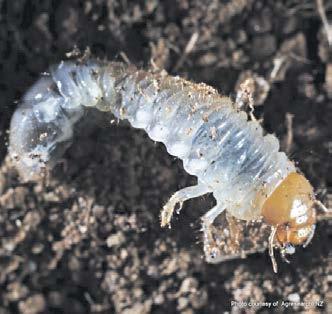
manufacturers are taking it out of production.”
“We’d really like to see them accelerate that development work,” Birkett said.
“It would be disastrous for food production and our agricultural exports if our farmers are left high and dry for any period without an effective control method.”
Birkett said the EPA also needs to play its role swiftly.
“Federated Farmers has been critical of the EPA’s failure to get on top of a backlog of assessment applications for agrichemicals and animal health treatments.
“We’ve welcomed Government announcements on new measures aimed at streamlining assessment processes, particularly in cases where chemicals are already being used safety in other countries.
“But the EPA also needs
to adjust its priorities and not focus on assessing generic chemicals that are already available,” he said.
“Their work stream needs to take better account of how far off approvals are for effective replacement products, including biosecurity and pest increase issues, and how much delays would cost the country.
“The new chemicals that offer the greatest economic benefits should get priority in the queue - and I would put any new treatment for grass grub in that category,” Birkett said.
Te Pahu dairy farmer John Bluett agreed farmers needed an alternative to Chlorpyrifos and Diazanon.
“Over the years we have seen a little bit of native grass grub, but black beetle and cut worm have done more damage in the Waikato.”
Both of the treatments


being phased can also be used on other insects.
Higher stocked dairy farms saw less of a problem, he said.
“The higher the stocking rate, the more likely native grass grub gets squashed in the soil,” he said.
Foundation for Arable Research arable and biosecurity and industry relationships officer Ash Mills said grass grub tended to be a pest that would be more noticeably impactful every four or five years in a paddock.
“I can appreciate the production losses adding up over time on properties,” Mills said.
“I agree with the Federated Farmers stance. Without a reliable product to replace Chlorpyrifos and Diazinon, then yes, we should be worried and expect to face even more significant losses in the future.”
Environmental Protection Authority acting manager of hazardous substances applications Shaun Presow said reducing the queue of hazardous substance applications was a top priority.
“We typically treat applications on a first come first serve basis, though it is possible to advance applications where a pressing need is identified,” he said.
“Before doing so however, we need to be sure that taking this action is necessary as it will mean other applications in the queue might have to wait longer.’

“The EPA has several other improvements underway to reduce the queue of hazardous substance applications, including boosting frontline staff and working towards streamlining processes for lower-risk substances. The changes support greater efficiency so that farmers have safer and more effective tools while also protecting people and the environment.”

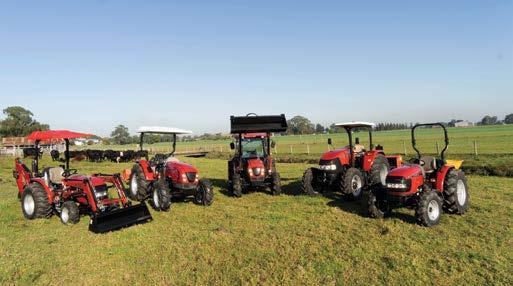

Federated Farmers biosecurity spokesman David Birkett is worried farmers could be left with no way of fighting native grass grub.
Grass grub larvae.
Photo: AgResearch. The grass grub beetle.
Photo: Phil Bendle
Shaun Presow

Your Will & Probate
When you pass away, your will comes into effect for the administration and distribution of your estate.
Presently, if you own more than $15,000 worth of assets (including but not limited to property, funds in a bank account, investments or superannuation savings like Kiwisaver) the executor(s) named under your will would need to apply to the High Court to obtain a grant of probate.
What is Probate?
“Probate” means “to prove”, derived from the Latin verb “probare” – which is to test or examine. Probate is a document issued by the Court and is the Court’s confirmation that a will is genuine and that the named executor(s) have the authority to distribute assets in accordance with the terms of a will. It provides certainty that an estate is being administered as per the deceased’s wishes. The application for Probate is the first step in an executor’s duties.
New Threshold
From 24 September 2025, the thresholds under sections 65(2) and (5) of the Administration Act 1969 will increase from $15,000 to $40,000. Practically, the effect of the increase to the threshold amounts means that there will be less estates being reduced as a result of court costs and legal fees.

If you have any questions regarding an estate or estate administration, please contact your solicitor to discuss further.
Lucy Sim

Being part of the change
Jayden Corbett was motivated after hearing and reading about whole-farm conversions to carbon forestry.
“It didn’t sit right with me,” he said. “I’m a young guy starting out a career in sheep and beef and heading for the hills but they’re planting out so many of the hills in pine trees.
So Corbett, 22, joined the Waikato Federated Farmers executive at May’s annual meeting.
“I reasoned there was no point just sitting at the dinner table every night and complaining about it.”
At that meeting Corbett found fellow farmers who encouraged him to join in, listen, learn and have a say.
“Federated Farmers took me under their wings, and then president Keith Holmes was keen to see me grow my Feds’ involvement.”
The Waikato branch sponsored Corbett on a one-day leadership workshop that covered topics such as the difference between governance and operational matters, conflict resolution, how to run an effective meeting, and setting values and a strong culture.
“It was excellent,” he said. “I’d got myself into a couple of positions helping at the golf course and the local hall, so it was also quite useful to take those skills back to those smaller community groups.”
Corbett was invited to Wellington to attend a Federated Farmers Meat and Wool Council meeting and, with the value of succession planning in mind, Waikato Meat and Wool chair Reon Verry suggested he might consider becoming his vice chair. And that’s exactly what came about at the province’s annual meeting in May.
Corbett grew up on a small dairy farm at Waerenga, about 20 minutes out of Te Kauwhata.
His granddad was the father figure in the household and while Corbett helped in the cowshed and fed out hay from a young age, his gaze was to the hill country of neighbours’ farms.
“I cottoned on pretty quickly I didn’t want to be a dairy farmer; the early starts weren’t my cup of tea,” Corbett said. “I wanted to be a sheep and beef guy and get off the flats and into the hills.”
At age 14, he knocked at the door of one of those neighbour’s farms and asked about work.
From then his high school holidays and some weekends were taken up with helping in the shearing shed and other farm tasks.
A little bit older and with more experience, he approached another neighbouring farm in the Matahuru Valley.
“That whole summer I was rolling up

fences down in the gullies.”
Seven years later, he’s still on the same property and he’s worked his way up the ranks to be manager.
It’s a 1000-hectare dry stock operation raising beef cattle across multiple properties on LUC 6 and 7 land, some of it pretty steep.
Corbett has two shepherds and a general hand under him.
“My bosses are young. I’m young. We get along and when I’d shown I was up to the tasks, they didn’t let my age get in the way.”
The ultimate aim is owning his own place, so he’s very supportive of the work Federated Farmers has put in to try to secure more competition in the banking sector, and to persuade the Government to allow young farmers access to their KiwiSaver funds to buy a first farm or herd.
As a step up the ownership ladder, he’s leased the family dairy farm and is taking it to beef for the first time.
“It’s about 100 hectares and me and granddad are working closely together to put it into intensive beef on the flat country.”
Corbett says better KiwiSaver access and a fairer deal from banks could make a big difference to young farmers – and the succession plans of the older generation.
He recalled having his own struggles with banks to secure the lease and stock when he told them he was 21 going on 22.
His own experience is that Federated Farmers welcomes younger members and will find a fulfilling role for them.
“We need a stronger farming voice now more than ever, especially with our district and regional councils.
“Building up some better communications with younger farmers is important and I also think we can reach out more to other groups to see where our interests align.
“I’m keen to be a part of that.”


DRAINAGE
Sheep and beef farmer Jayden Corbett joined Waikato Federated Farmers’ executive at 22.
Six scholarships on offer
Applications are open for six on farm science scholarships offered by the Ministry for Primary Industries.
The scholarships, worth a total of $30,000, are on offer for the 2026 academic year to tertiary students enrolled in agriculture, horticulture, science, or viticulture degrees.
Applicants must have completed their first year of study,
MPI director of on farm support
Vanessa Winning said there was strong demand for on-farm advice backed by science and analysis to support producers to adapt and improve business performance.
“MPI is backing initiatives that support farmers and growers to sustainably boost productivity and profitability, helping to achieve the



Government’s goal of doubling the value of exports by 2034.”
Applications for the scholarships close in mid-September.
Manawatū-Whanganui Ballance Agri-
Nutrients intern Ffion White was one of the inaugural recipients of the On Farm Support Science Scholarship.
“I’m getting to work on-farm alongside Ballance’s nutrient specialists. My role is about helping farmers improve their soil, grow better quality pasture and crops, and become more productive and profitable,”
White said.
“The scholarship was hugely beneficial. I had a mentor from MPI’s On Farm Support team who invited me to industry field days and events. It helped me meet people in the sector which came in handy when I started looking for a job.”


White completed a Bachelor of Agricultural Science at Massey University and is one of four scholarship recipients who have secured primary industry advisory roles.
Feilding-based KS Agri farm consultant Nerissa Edwards was another recipient.
“Every day is different. I find it hugely rewarding working with farmers to create individual plans to drive improvements in on-farm efficiency, profitability, and sustainability,” Edwards said.
“The scholarship enabled me to build connections within the advisory sector. That led to a six-month internship with KS Agri and eventually a role as a consultant.”
Just go for it

By Chris Gardner
The supreme winner of the Waikato Farm Environment Awards, Tor Pedersen, is urging others to enter next year’s awards.
“Just go for it,” said Pedersen, of Broomore Farm near Raglan.
His family has run a 300-hectare dairy farm on Waitetuna Valley Road since 1967.
“You’ve got nothing to lose and everything to gain. What you can learn from the awards and networking with different people – it’s invaluable.”
The awards, facilitated by the New Zealand Farm Environment Trust, celebrate excellence in sustainable farming and growing.
“The awards are about celebrating progress, not perfection, and sharing ideas across sectors and regions, farmers learning from farmers,” said trust general manager Sarah Harris.
“They are also a great opportunity to reflect on what you’ve achieved, gain feedback for future growth, and connect with like-minded farmers and growers who are passionate about looking after the land for future generations.”
Entries for the next year’s awards are already open and close in October.



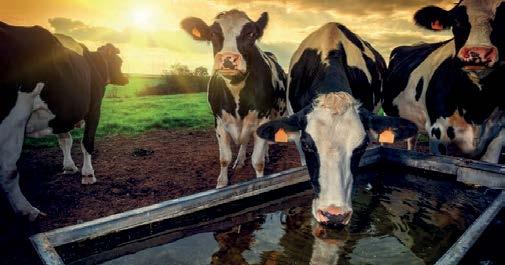










Tor Pedersen says networking with other farmers through the Farm Environment Awards is invaluable.
Ministry for Primary Industries director of on farm support Vanessa Winning.
Nerissa Edwards Ffion White

Knutson rewarded
received honorary life membership to that association, has placed his new certificate among a slew of other awards displayed in his Ōtorohanga home.
“You feel very proud to have been honoured in this way,” Knutson, now 82, said. “It does mean a lot, even after all
The collection recognises a lifetime’s work in the industry, covering his years farming, breeding, showing and judging Friesians, and his extensive work as a classifier, which saw him travel the length and breadth of the country.
He became NZHFA’s second patron after Canterbury’s John Grigg - the first person to import and breed Holstein Friesian cattle into New Zealand. One of his first jobs in that capacity was to declare the Holstein Friesian New Zealand 2010 centenary open. He represented the national association twice on visits to the United
Knutson also spent time as chairman of the NZ Dairy Breeds Federation, sitting on the Dairy Breeds Advisory Committee. In 1992, he was given a NZHFA Special Service Award for his 25 years’ service to the TOP (Traits Other than Production) scheme, acknowledging the part he played in establishing the classification scheme that uses a linear system to score each animal’s strengths and/or
Regional council’s conference cost
By Mary Anne Gill
Two Waikato regional councillors and chief executive Chris McLay attended the recent Local Government New Zealand (LGNZ) conference in Christchurch.
The council was a member of LGNZ at the time of the conference because even though they had voted to leave the organisation, there was a notice of motion signed by a majority of councillors proposing to revoke the decision.
Councillors Robbie Cookson and Warren Maher were also scheduled to attend but withdrew. However, because their tickets were non-refundable, the council still had to pay $3300 for their unused spots.
The bookings to attend the conference were made following a council decision in March, three months before councillors voted to leave LGNZ. In total, the conference cost the council $12,084.89, covering attendance by Angela Strange, Tipa Mahuta, and McLay.
This month, the council voted to rejoin LGNZ - on

Chris McLay
the casting vote of chair Pamela Storey.
Taxpayers’ Union investigations coordinator Rhys Hurley criticised the spending, calling it “outrageous.”
“If councillors make the right call and walk away from LGNZ, they shouldn’t send ratepayers the bill for one last junket,” Hurley said.
“LGNZ has shown time and time again it doesn’t have the best interests of councils at heart. Waikato should have stuck to their original decision and stayed well away from the failing organisation.”
weaknesses for a national database.
The Knutson name has strong links to New Zealand’s Holstein Friesians. Brian’s father Cedric followed his own father’s tracks and went on to establish the highly-regarded Turepo stud, first in the Wairarapa and then at Kio Kio.
Brian and his brother Ross purchased their father’s 80ha farm in the 1960s, milking 160-180 cows, but following rapid growth, Brian and his wife Val struck out on their own and Ranui Stud on Old Te Kuiti Rd in the early ‘70s was founded on bloodlines from his father’s Turepo herd. At its peak, and after Brian had purchased two neighbouring properties, Ranui had around 260 Friesians.
The long line of Knutson men started early, showing calves in local show rings as youngsters, learning from the best, and going on to breed a string of champions. All of them were deeply involved in the administration side of the industry.
Ten years ago, and with none of his three sons eager to go farming, Brian gave up the farm and retired fully.
Over 100 guests from around the country attended the Waipā Holstein Friesian Club’s 50th jubilee and Taranaki-King Country MP Barbara Kuriger and NZHFA president Owen Copinga delivered addresses.
Longstanding member Sue Blackler presented Brian Knutson with his award, outlining his ‘dedication and untiring work promoting Holstein Friesians, both within the club and nationally’.
Club patron Colleen Craig said: “A half-century is a long time in anyone’s language, and Waipā Holstein Friesian Club’s achievement of this auspicious milestone called for a worthy celebration.”
Record entries for tribal festival
By Chris Gardner
The home of the Tainui waka anchor stone will showcase the diversity and vibrancy of Maniapoto hapu at the largest Te Nehenehenui Tribal Festival since the event began in 2014.
Tainui Wētere Domain in Mōkau will host the second event since the pandemic enforced break on September 12 and 13.
The festival has attracted an average of nine haka teams from schools, marae and hapu across Te Nehenehenui, but this year the event has attracted 17.
New teams joining the line-up are Te Kura o Ōtorohanga, Te Tuhinga from Mōkau led by Sean and Moana Hamana, Pūāwhe led by Arana and Meti Hughes, Te Whare Haka o Rereahu
led by Layelin and Stella Stewart, and Ngārauwharawhara o Te Korapatū from Hangatiki led by Ashleigh Papa. Oparure Marae group Ngā Tapuwae o Kinohaku will return for its third appearance, highlighting an ongoing commitment to the event and its purpose.
The festival consists of three main sections—Karanga Tamariki (Junior), Karanga Rangatahi (Intermediate), and Karanga Pakeke (Open Senior).
Kapa (teams) compete in four key disciplines: Karanga (ceremonial call), Whaikōrero (oratory), Haka Pōwhiri (ceremonial welcome chant), and Waiata Tawhito (traditional chant). This approach contributes to the growth of tribal practitioners and leaders for the future.
Waipā players at world cup
By Jesse Wood
A total of 10 Waipā players are in Jeju, South Korea with the New Zealand under-20 men’s lacrosse world cup team. Baastian Banks, Murdoch Bech, Sam Cowen, Sam Denize, Connor HarveyPrice, Nathan Honeyfield, Quade Raroa and Bobby Scott are full squad members, while Harley Stevens and Mark Seagar have been named as a travelling alternates. New Zealand’s 22-strong team, including four American-based players, are ranked 19th in the world and are
hopeful to improve their ranking.
Upon their return from Korea, some squad members will have just a day to recover before leaving to compete at the national secondary schools lacrosse tournament in Auckland.
Those young enough will hope to gain selection for the Waikato under-18 team to play at the Te Awamutu-based nationals in September.
The under-18 tournament will be held in conjunction with the under-15 division, a great opportunity for the Te Awamutu economy and spectators.
Briefs…
Library’s future
Sitting councillors
Roger Gordon and Philip Coles seemed to imply the council’s Cambridge Service Centre will have 40 fewer staff based in it once Waikato Waters Ltd – the seven strong councilcontrolled organisation established to deliver water and wastewater services is launched. They would not be drawn at the meeting held at Arvida Lauriston Park Care Home whether that means the town’s library can expand.
Request made
On the Radar, a newsletter produced by Waipā’s communications team to replace the staff reports contained in council agendas until late last year, is onto its 15th version and The News has yet to see a copy of it despite being told we would be able to access the information. We are required to lodge Local Government Official Information and Meetings Act (LGOIMA) requests. The information being held back from immediate release to the public includes details of building and resource consents.
Flying high
Waipā based members of the Waitomo Aero Club were to the fore during competitions in the 2024-25 season. Paul Grayson, Geoff Peake, Chase Good, Lindsay Smit and Jason Inness (Te Awamutu) and Ross Weinberg were among the top three in various classes announced earlier this month.
Brian Knutson with the lifetime membership award presented to him at the recent 50th jubilee of the Waipā Holstein Friesian Club.
Photo: Viv Posselt






week Across
Humorous ridicule (6)
Bravery (6)
Boisterous (5)
Dampen (7) 11. Innovator (7)
Fit of extravagance (5)
Shoelace hole (6)
(7)
Across: 1. Spur 4. Survey 8. Conceal 9. Stall 10. Slip 11. Reprieve 13. Near thing 17. Ambulant 19. Clog 21. Magma 22. Unaware 23. Intend 24. Mite. Down: 2. Pension 3. Reel 4. Silver-tongued 5. Restrain 6. Erase 7. Sleek 8. Case 12. Tall tale 14. Gallant 15. Balmy 16. Ogle 18. Begin 20. Calm.




Zest for citrus
One of our most recent citrus gems is yuzu. It originated in East Asia and grows wild in Korea and Tibet. However, it is now cultivated in New Zealand and Australia. Yuzu is the most cold-resistant of all the citrus fruits and is about the size of a mandarin with a substantial number of pips and a very tangy flavour.
It is mainly associated with Japan, where its fragrant peel is enjoyed in soups and simmered dishes. The juice is also added to ponzu dipping sauce. Western cooks use the peel and juice to flavour ice creams, desserts and olive oil.
Another relatively newbie, the finger lime or citrus caviar, is native to northern Queensland.
These gherkin-sized fruit have flavour bomb pearls that are squeezed from their capsules for use in drinks, savoury dishes (they’re especially good with seafood) and desserts.
Tip: I made little meringues with the leftover egg whites from the Yuzu Flan. Beat together 3 egg whites, a 1/2 cup of caster sugar and a pinch each of salt and cream of tartar, until stiff.
Fold in a 1/4 cup of caster sugar. Pipe petit meringues onto two baking paper-lined oven trays and bake at 120°C for 1 hour until crisp. Cool. Store in an airtight container in the fridge. Makes 75.
Tart Yuzu Flan
Crust: 250g superwine biscuits or similar
1 teaspoon ground ginger
100g butter, melted
Filling: 1/4 cup water
1 tablespoon powdered gelatine
2-3 yuzu
1/4 cup lemon juice
3/4 cup sugar
3 large egg yolks
300ml cream
3 tablespoons icing sugar
Preheat the oven to 180°C. Lightly butter a 20-23cm loosebased flan pan.
Finely crush the biscuits. Place in a bowl. Add the ginger and butter and mix well.

With the base of a glass, press the crumbs firmly onto the base and sides of the flan. Bake for 10 minutes. Cool, then chill.
Place the water in a small bowl. Sprinkle the gelatine on top. Soak for about 5 minutes, until swollen.
Finely grate the rind of 1 yuzu. Squeeze the remaining yuzu to make a 1/3 cup of strained juice.
Whisk together the yuzu and lemon juices, sugar, egg yolks and grated yuzu rind in a double boiler over simmering water, until slightly thickened and warm. Whisk in the softened gelatine until dissolved and smooth. Chill the mixture, stirring occasionally. Transfer to a large bowl. Whip the cream and icing sugar, until stiff peaks form. Fold 1/4 of the whipped cream into the yuzu filling, until incorporated.
Fold in the remaining cream in 3 additions. Chill, until just beginning to set. Spoon into the crumb crust. Chill. Can be prepared up to 2 days ahead.
I used little meringues using the leftover egg whites from the flan as a garnish. Serves 8.
Whitebait Roulade with Finger Limes
Roulade: 250g whitebait
4 large eggs, separated 1/4 cup cream flaky salt and freshly ground black pepper to taste

6 tablespoons grated parmesan cheese, divided
Filling: 3/4 cup sour cream
2 gherkins, rinsed, drained and finely chopped
2 tablespoons finely chopped chives finely grated rind 1 lemon flaky salt and freshly ground black pepper to taste
Garnish: 4 finger limes
Preheat the oven to 200°C. Grease and line a 33cm x 23cm sponge roll pan with baking paper. Wash and drain the whitebait. Pat dry with a paper towel.
Combine and lightly whisk the egg yolks, cream, salt, pepper and 2 tablespoons of the parmesan cheese. Add the whitebait.
Beat the egg whites until stiff. Fold 2 tablespoons into the whitebait mixture then gently fold in the remaining egg white so the volume is not lost.
Pour into the prepared pan. Bake for 8-10 minutes, until cooked through but still soft. Turn onto a sheet of baking paper that has been lightly dusted with the remaining parmesan cheese. Cool.
Spread with the sour cream. Sprinkle with gherkins, chives, lemon rind, salt and pepper. Carefully roll up from a long side. Cover and refrigerate for up to 1 day.
To serve, cut into 2cm rounds. Garnish with the tangy, ‘caviar-like’ pearls squeezed from the finger limes. Serves 8 as a starter or 4 as a main course.


















Swayne Road





Tart Yuzu Flan
Whitebait Roulade with Finger Limes

- Private back
(automatic
- Brand new kitchen - dishwasher, double oven, insinkerator, brand new benchtop, ceramic hob
- Solar power, new roof, double glazing in spacious bedroom.
- Dual entry bathroom (en-suited), wet floor shower.
- Floor-standing heat pump in lounge; sunroom/office that radiates a really nice warm ambience.

- Ideal for first-home buyers, downsizers, or investors
- Recently refurbished kitchen, complemented by brand-new timber flooring that flows throug kitchen, dining & lounge areas.
- French doors open out to a sunny, private courtyard, perfect for relaxing, complete with a sunshade and raised garden beds.
- Two garden sheds, one of which has been thoughtfully converted into a cosy home office or gym space.

- Located in this very
the solidness of Huntly
of
- 3 spacious bedrooms and a good-sized bathroom.
- This house continues to offer space with its large entrance, lounge, kitchen and dining area.
- So, if you want a well-priced home that you can still do something with, call me to view 94 Thornton Road or come to the next open home.


- Open-plan kitchen, dining, and lounge area provide a great space for everyday living and entertaining.
- Comfort is covered year-round with both a heat pump & a log fire.
- Three bedrooms, all offer good space and natural light.
- One bathroom, plus a separate WC for convenience.
- Well-fenced section, perfect for a small to medium-sized dog or ensuring privacy and security.
- Spacious garage with a workbench, ideal for DIY projects or extra storage.







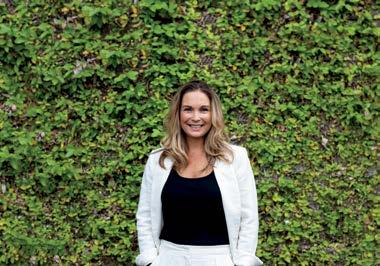

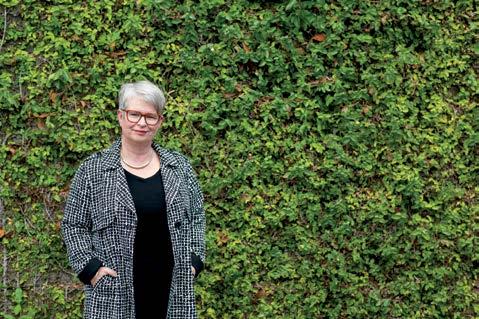



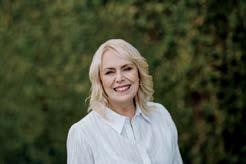

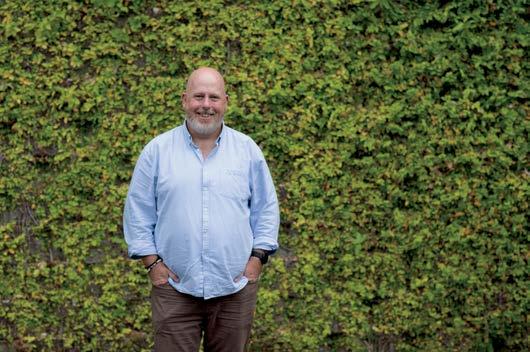


















Contact
Contact
Contact
Contact
Contact
Contact
Contact
Contact
Contact Marisa
Contact Eilish, Amy or
Contact
Contact
Contact
Contact
Contact
Contact
Contact
Contact
Contact
Contact Rachael
Contact Paulette
Market Appraisal

Contact
Contact
Contact
Contact
Contact Eilish,
Contact Eilish,
Contact
Contact
Contact Eilish,
Contact
Contact
Contact













































CLASSIFIEDS


























HUNTER, Joy Veronica – Passed away peacefully on the 10th of August 2025 aged 93 years. Cherished wife of the late George. Dearly loved mum of Jose and Alan, Michael and Vanessa and Julian and Fred. Loved grandmother to all her grandchildren and great-grandchildren. A service for Joy was celebrated at the Atawhai Assisi Chapel, Matangi on the 14th of August 2025. Communications to the Hunter family C/- Legacy Funerals Cambridge, PO Box 844 Cambridge 3450.

MORRIS, Olga Jean –Passed away peacefully on Wednesday, 13th August 2025. Loving mother of Dave, Brian, Lance, and Lorraine. Much loved Aunt of Olive Driscoll and her husband Ray. The family extends their heartfelt thanks to the staff at St Kilda Care Home for their dedicated care. In accordance with Olga’s wishes, a private farewell has been held. Messages to the Morris family may be sent c/3 Hallys Lane, Cambridge 3434, or left in Olga’s online tribute book at www.grinters. co.nz

PHILIP, David James Alexander (Dave) – Passed away peacefully at Waikato Hospital on Sunday, 17th August 2025, in his 81st year. Loving husband of Barbara. Devoted father and father-inlaw of Scott, Paul & Michelle, Anna & Liam, and Glenn & Jos. Cherished Poppa to his eight grandchildren. A proud member of the Cambridge Lions Club, where he was known for his dedication. A celebration of Dave’s life will be held at the Cambridge Town Hall, Victoria Street, Cambridge, on Tuesday 26th August 2025 at 11:00am, followed by a private cremation. Messages to the Philip Family can be sent c/3 Hallys Lane, Cambridge 3434, or left in Dave’s online tribute book at www.grinters. co.nz.



Cambridge, your stories are in safe hands. 07 827 7649 legacyfunerals.co.nz

CAMBRIDGE HIGH SCHOOL
YEAR 9 2026 ENROLMENTS
Enrolment packs are available from: Cambridge Middle School reception, Cambridge High School reception, or the Cambridge High School website, www.camhigh.school.nz
CARS FOR SALE
2008 BLACK MITSUBISHI DELICA for sale – D5 Van, eight-seater, two x fourwheel drive, 12-month WOF, new tyres, brake pads, towbar $8500. Ph 027 9556243
Testing days for 2026 Year 9 students enrolled at Cambridge High School: CMS - Wednesday 27 August and Thursday 28 August All other schools - Friday 29 August Local Year 8 teachers will share CHS information regarding these days.
Enrolments for 2026 out-of-zone students CLOSE on Thursday 21 August
All enquiries: Tel: 07 827 5415
Email: enrolments@camhigh.school.nz www.camhigh.school.nz




REMINDER - CAMBRIDGE MARAE ANNUAL GENERAL MEETING
The Trustees of Cambridge Marae invite whānau and community members to attend the Annual General Meeting (AGM).
Date: Monday, 1st September 2025
Time: 7:00 PM
Location: Cambridge Marae, Entrance on the corner of Pope Terrace
As we are a Community Marae, everyone is welcome to attend and to consider being involved as a Trustee, Committee Member, or Supporter.
Agenda items include annual reports, trustee updates, and general business. All are welcome. Nau mai, haere mai! For enquiries, please contact: secretary@cambridgemarae.org

Notice of Public Annual Meeting of Beneficiaries
Availability of the 2025 Chairperson’s Annual Report, Financial Statements, 2025-26 Annual Plan, and Waipā Networks Ltd Statement of Corporate Intent.
I hereby give notice that on Friday the 29th of August 2025, commencing at 10.00am, a Public Annual Meeting of Beneficiaries (Connected Consumers) will be held at Waipā Networks, 240 Harrison Drive, Te Awamutu.





At the meeting the Trustees will report on:
• The operation of Waipā Networks Trust for the year ended 31 March 2025.
• The Financial Statements of Waipā Networks Trust for the year ended 31 March 2025.
• The performance of Waipā Networks Limited for the year ended 31 March 2025.
• The compliance of Waipā Networks Limited with its Statement of Corporate Intent for the year ended 31 March 2025.
• The Annual Plan 2025/26 of Waipā Networks Trust.
At the meeting the Beneficiaries will be given the opportunity to:
• Appoint the Auditor for Waipā Networks Trust for the 2026 financial year.
• Speak on all matters being considered at the Annual Meeting.
Please note that the above named documents are available for public inspection on the Trust website or at the offices of Waipā Networks Limited at 240 Harrison Drive, Te Awamutu during ordinary business hours.
K M Heeringa - Trust Manager

Service: 11.00am Like us on Facebook: h�ps://www.facebook.com/cambridge.sda.9 email: cambridge.sda.nz@gmail.com
Phone: 021 277 1909
Hope Channel – Freeview Ch 27, Sky 204 We offer



Ian Calvert Funeral Director
Date: 27th August
Time: 7pm
Venue: Waipa District Council bldg 23 Wilson Street Cambridge
Live In House Keeper
Required
For Outstanding Rural
Property in Matamata
Please Call 022 029 4740
For more information
VEHICLES WANTED – We buy all cars, vans, utes, trucks, in any condition, dead or alive. Call 0800 333 398 or text 021 344 449
WORK WANTED
CONTACT GOOD SPEED CONSTRUCTION for all your building and project needs. No job to big or small. One call does it all. Call Ross 021 063 2268
Section 101, Sale and Supply of Alcohol Act 2012
PUBLIC NOTICE
Of an application for On Licence
Eden Venue Limited, 4 De Val Drive, Titirangi, Auckland NZ 0604 has made application to the Waipa District Licensing Committee for the issue of a on-licence in respect of the premises at 501 Fencourt Road, Cambridge 3493 known as EDEN.
The general nature of the business to be conducted under the licence is Function Centre and Caterer. The days on which and the hours during which alcohol is sold under the licence are: Monday to Sunday, 10am-11:30pm.
The application may be inspected during ordinary office hours at the office of the Waipa District Licensing Committee, 101 Bank Street, Te Awamutu or 23 Wilson Street, Cambridge.
Any person who is entitled to object and who wishes to object to the issue of the licence may, not later than 25 working days after the date of the publication of this notice, file a notice in writing of the objection with the Secretary of the District Licensing Committee at: Waipa District Council, Private Bag 2402, Te Awamutu 3840.
No objection to the issue of a licence may be made in relation to a matter other than a matter specified in section 105 of the Sale and Supply of Alcohol Act 2012. This is the second publication of this notice. This notice was first published on 14 August 2025.
Section 101, Sale and Supply of Alcohol Act 2012
PUBLIC NOTICE
Of an application for Off Licence
Rivercity Enterprises Limited, 27 Millennim Heights, Flagstaff, Hamilton 3210 has made application to the Waipa District Licensing Committee for the renewal of a off-licence in respect of the premises at 1/9 Campbell Street, Leamington, Cambridge known as Liquor Centre Leamington.
The general nature of the business conducted under the licence is bottle store. The days on which and the hours during which alcohol is sold under the licence are: Monday to Sunday, 9am-10pm.
The application may be inspected during ordinary office hours at the office of the Waipa District Licensing Committee, 101 Bank Street, Te Awamutu or 23 Wilson Street, Cambridge.
CAMBRIDGE OPEN HOMES
• ROOF
• MOSS & LICHEN REMOVAL
• PRE-PAINT ROOF CLEANING
• TILE ROOFS
• COLOURSTEEL ROOFS
• DECRAMASTIC TILE ROOFS
and
Any person who is entitled to object and who wishes to object to the issue of the licence may, not later than 25 working days after the date of the publication of this notice, file a notice in writing of the objection with the Secretary of the District Licensing Committee at: Waipa District Council, Private Bag 2402, Te Awamutu 3840.
No objection to the issue of a renewal licence may be made in relation to a matter other than a matter specified in section 131 of the Sale and Supply of Alcohol Act 2012. This is the second publication of this notice. This notice was first published on 14 August 2025.

Join a leading agricultural machinery dealership!







Giltrap Agrizone Cambridge are looking for qualified Service Technicians (Heavy Diesel) to join our experienced and high-performing team dealing with tractors & farm machinery. We have a workshop and a field-service role available.
If you’re passionate about agricultural machinery, thrive in a busy environment and enjoy working with industry experts, we want to hear from you!
Mechanical experience with tractors & agricultural machinery is required, as is a methodical approach and ability to problem solve with a customer service focus. What we offer:
• Full time positions
• Vehicle/laptop/phone/on-call & call-out allowances for the Field Service role
• Supportive team culture
• Ongoing training & development
• Competitive remuneration & benefits
If this sounds like you, email your CV to HR@gaz.co.nz or ring Jason Middlemiss for a chat on 027 5554 106 SERVICE TECHNICIANS WANTED WORKSHOP





Husqvarna Series™ Engine - 10.9hp - 38” Cutting Width
Compact yet powerful garden tractor o ers intuitive operation and delivers excellent results on large open lawns.

Husqvarna Series· V-Twin Engine - 12.0kW94cm Cutting Width - 30cm Uncut Circle Features a combi cutting deck that provides two cutting options - BioClip® mulching and rear ejection cutting for higher, tougher grass.

Husqvarna Series™ Engine - 10.9hp - 38” Cutting Width
The TC 138T is ideal for homeowners and landowners with medium sized gardens who need a durable and comfortable tractor with high maneuverability. It is an e cient garden tractor that o ers excellent collection of grass clippings as well as leaves, giving tidy cutting results. The spacious, integrated collector is easily emptied from the driver’s seat. Equipped with a powerful Husqvarna V-Twin engine, pedal-operated hydrostatic transmission and cast front axle for extra convenient and trouble-free operation. Only one hour on the clock.
8,300
Husqvarna Series™ Engine - 12.2hp - 38” Cutting Width
Reliable garden tractor delivers an exceptional mowing experience on any large lawn – even in narrow passages.

Kawasaki FS Series V-Twin - 9.6kW103cm Cutting Width - 30cm Uncut Circle Easy to use, versatile rider provides smooth operation and e cient mowing results. Equipped with intuitive display, dual headlights and Bluetooth. 112cm deck.
13,790

Cut like a professional with true zero turn performance and heavy-duty ClearCut™ fabricated deck for landowners with open lawn areas.

10,299
cutting deck designed for durability, performance and an even cut.














